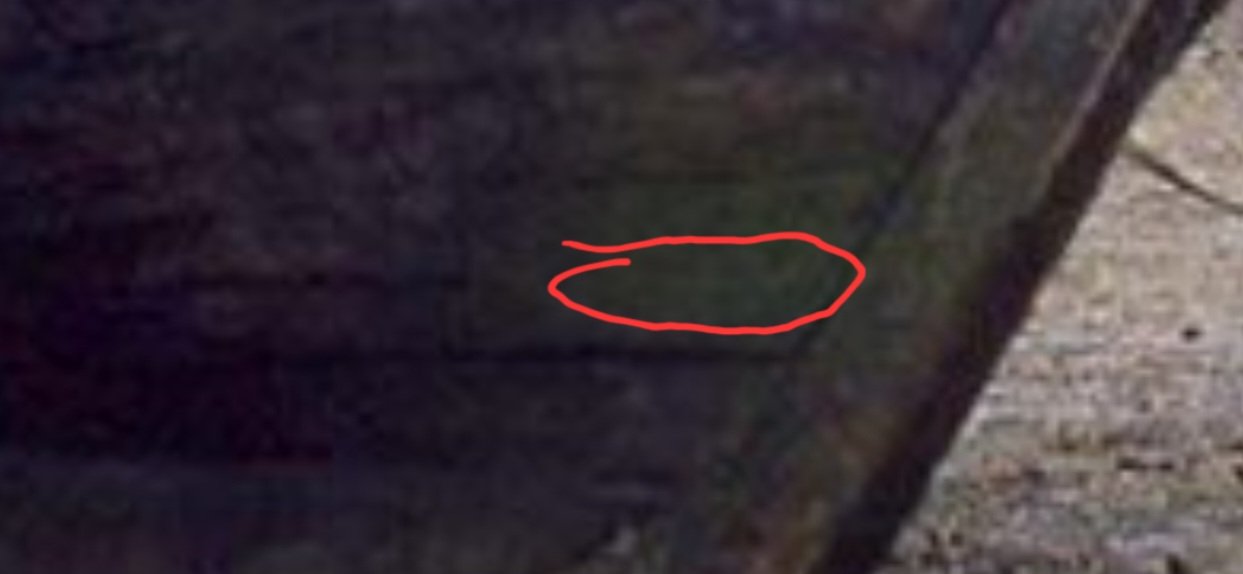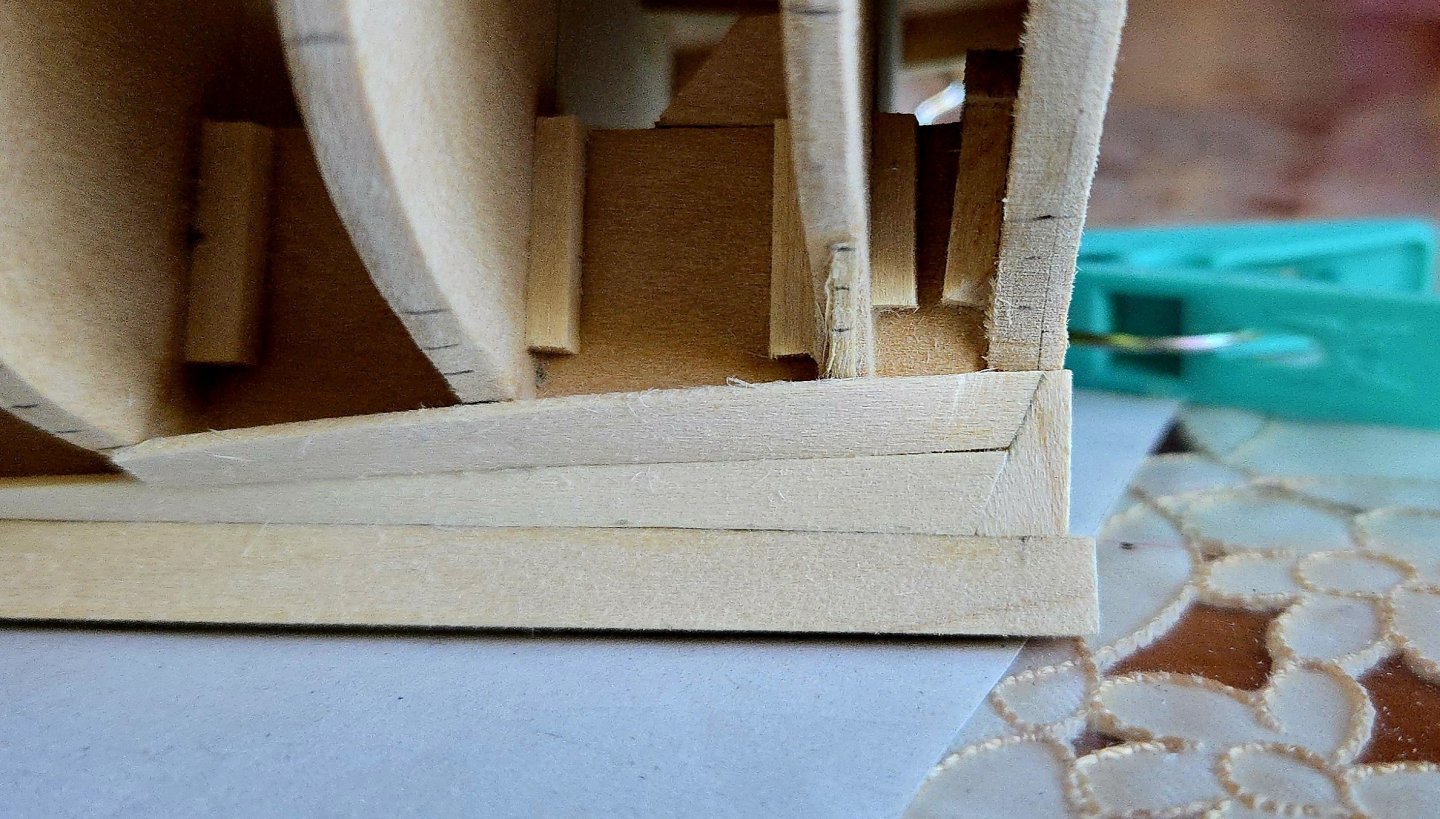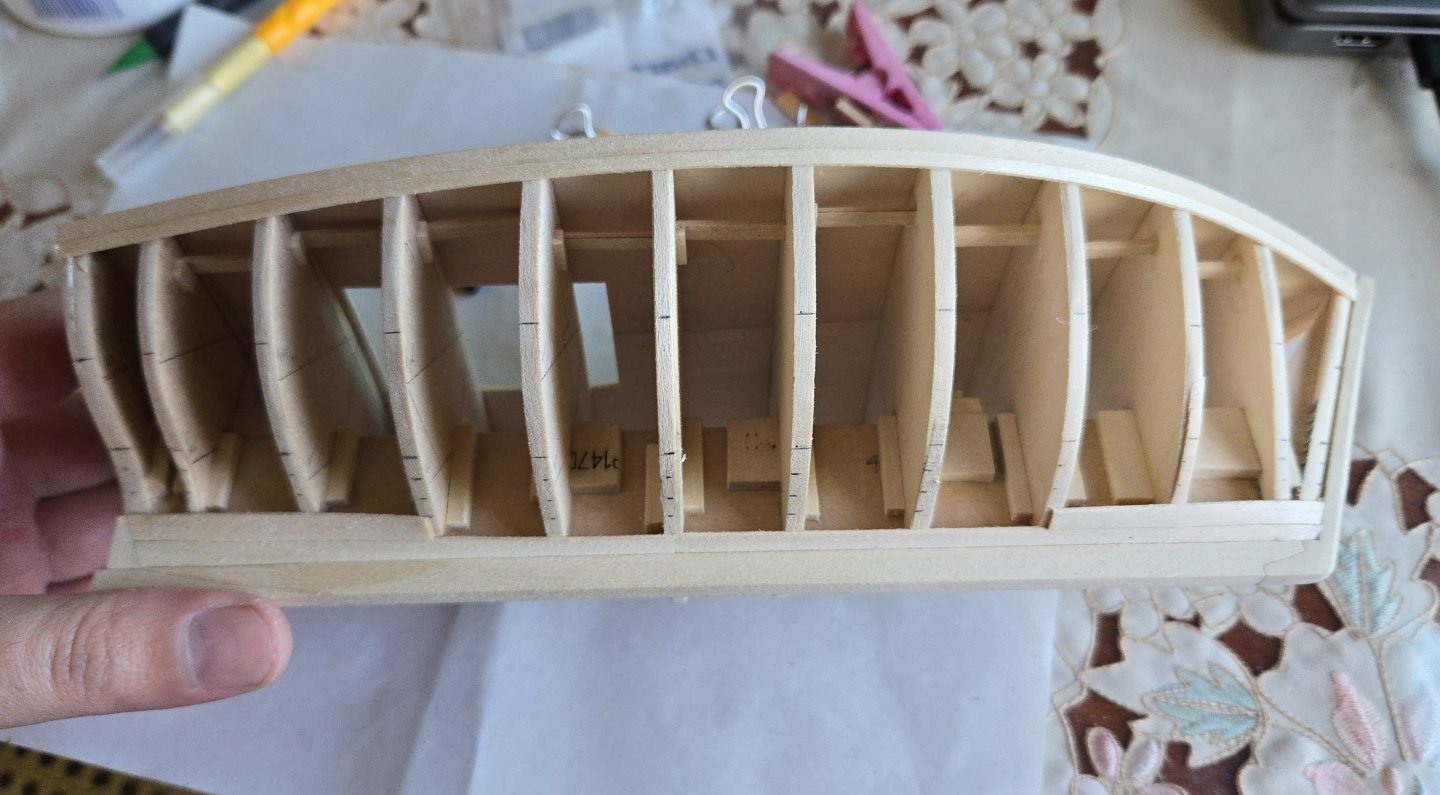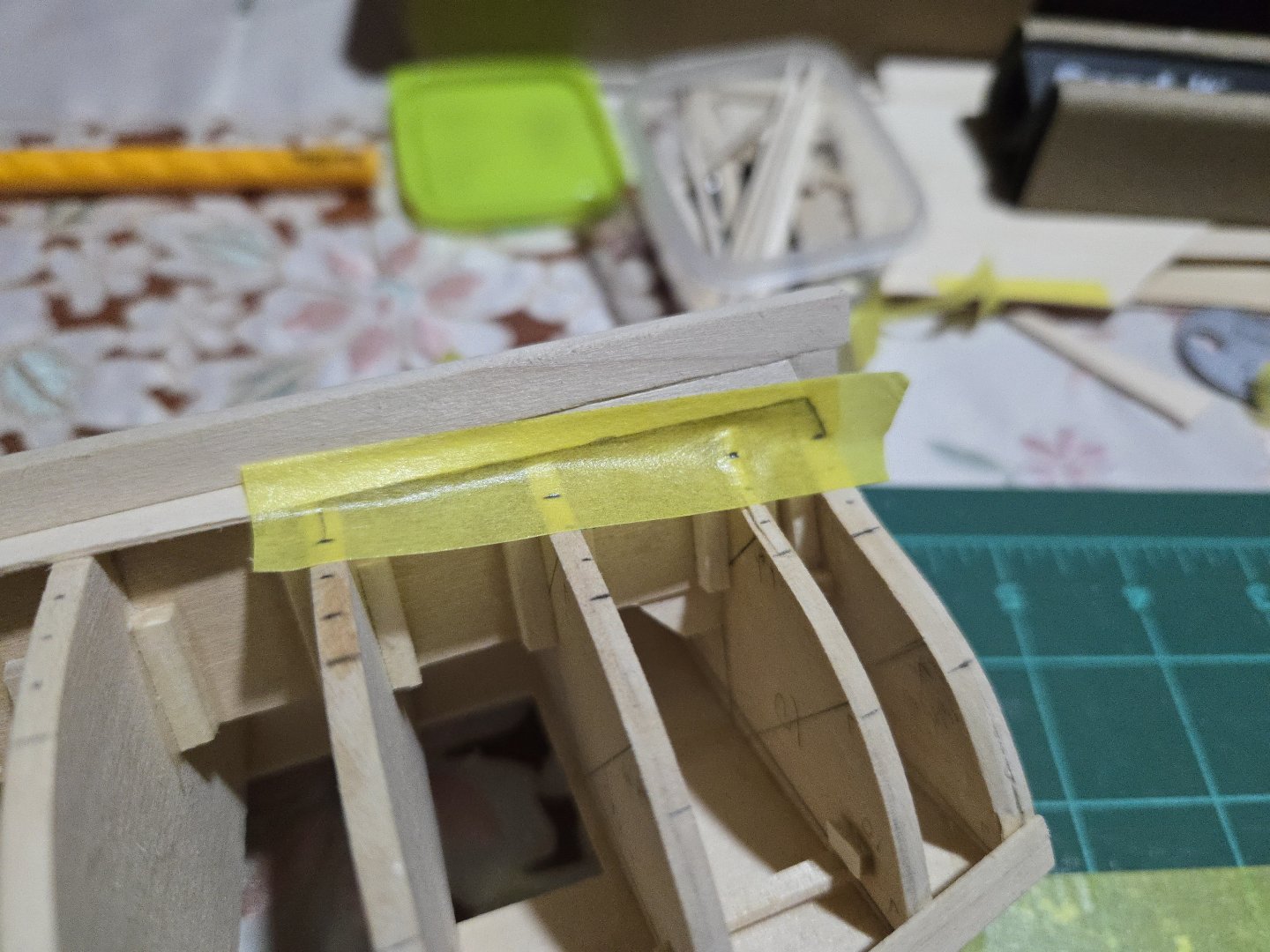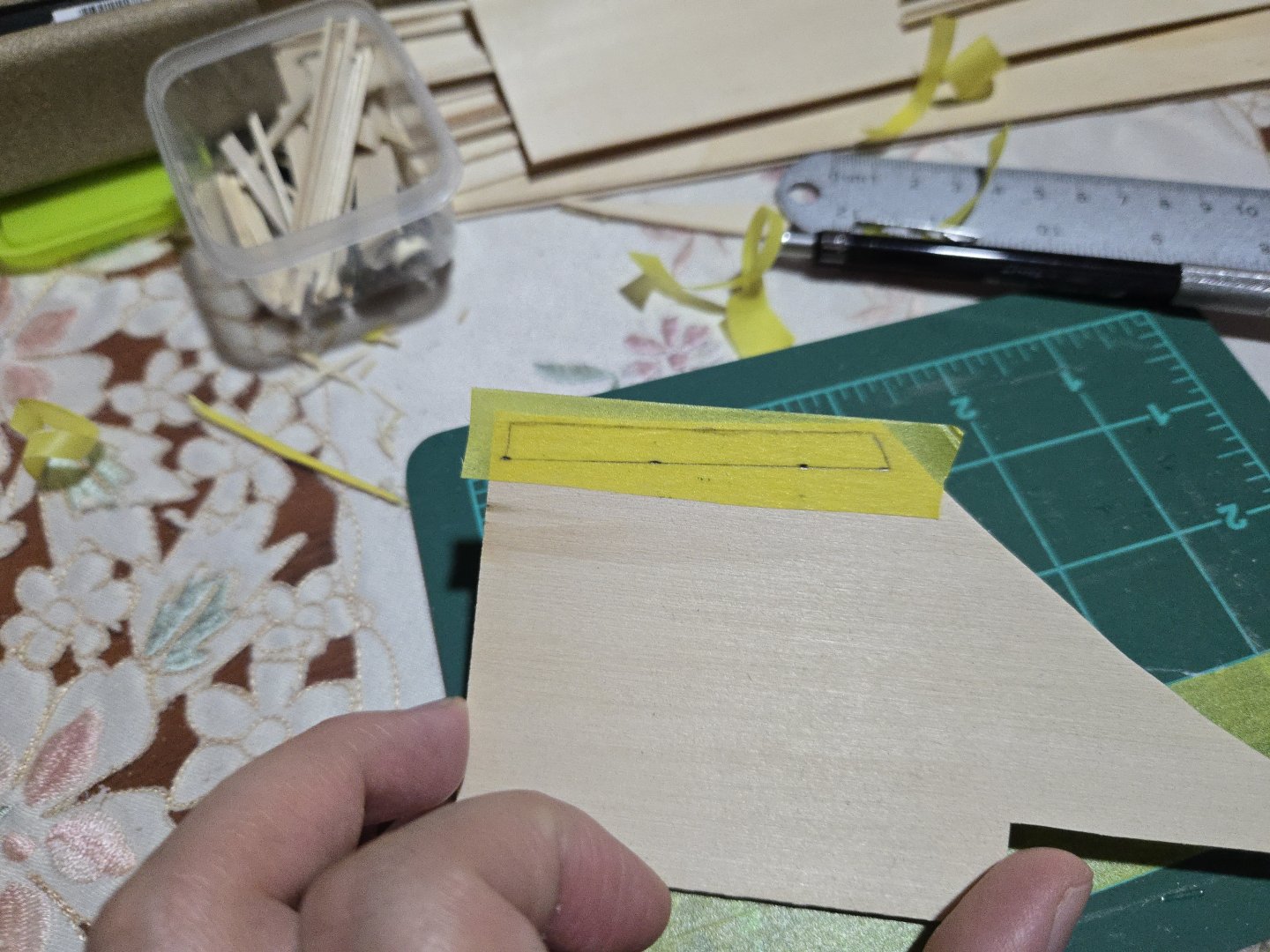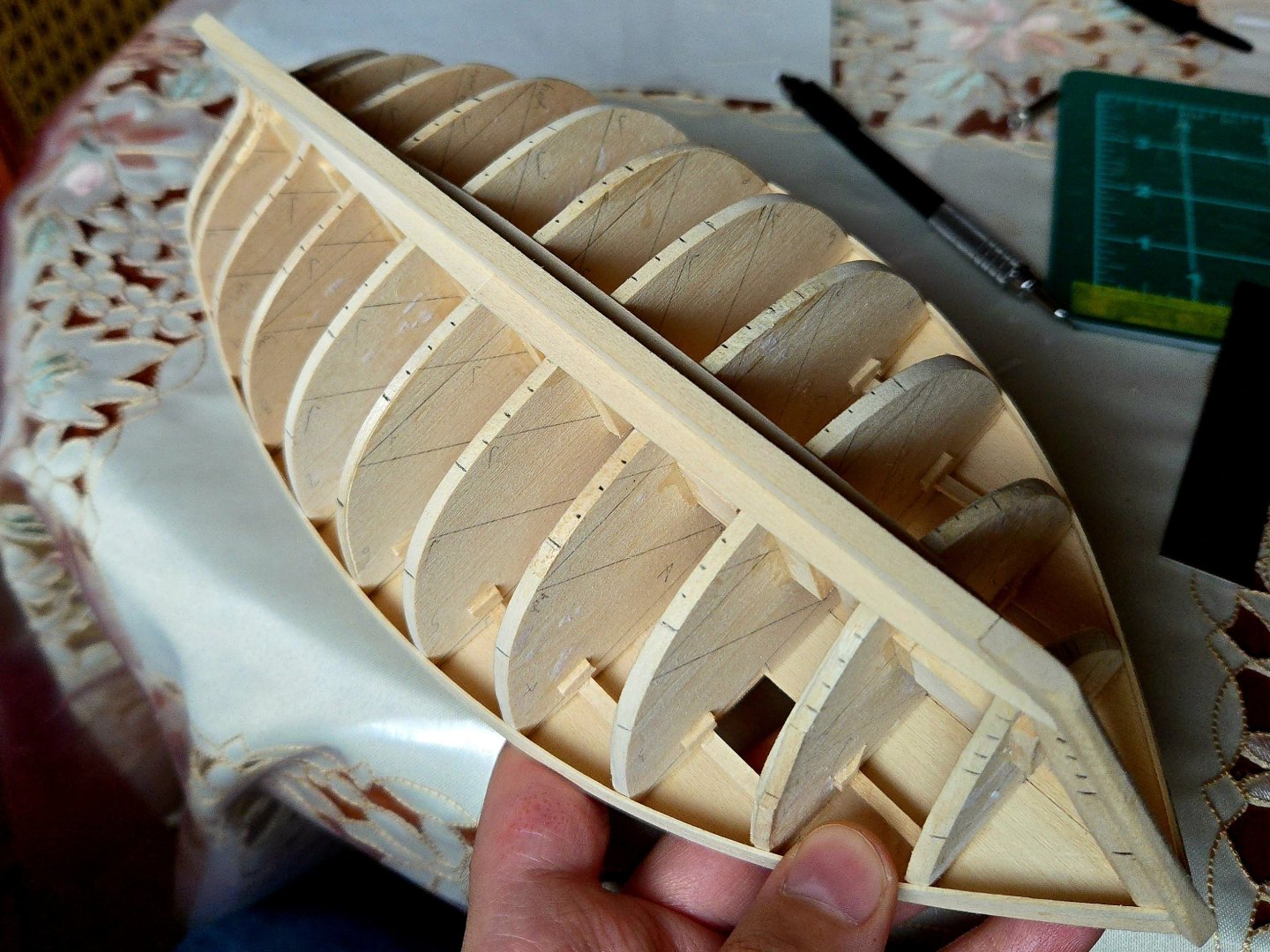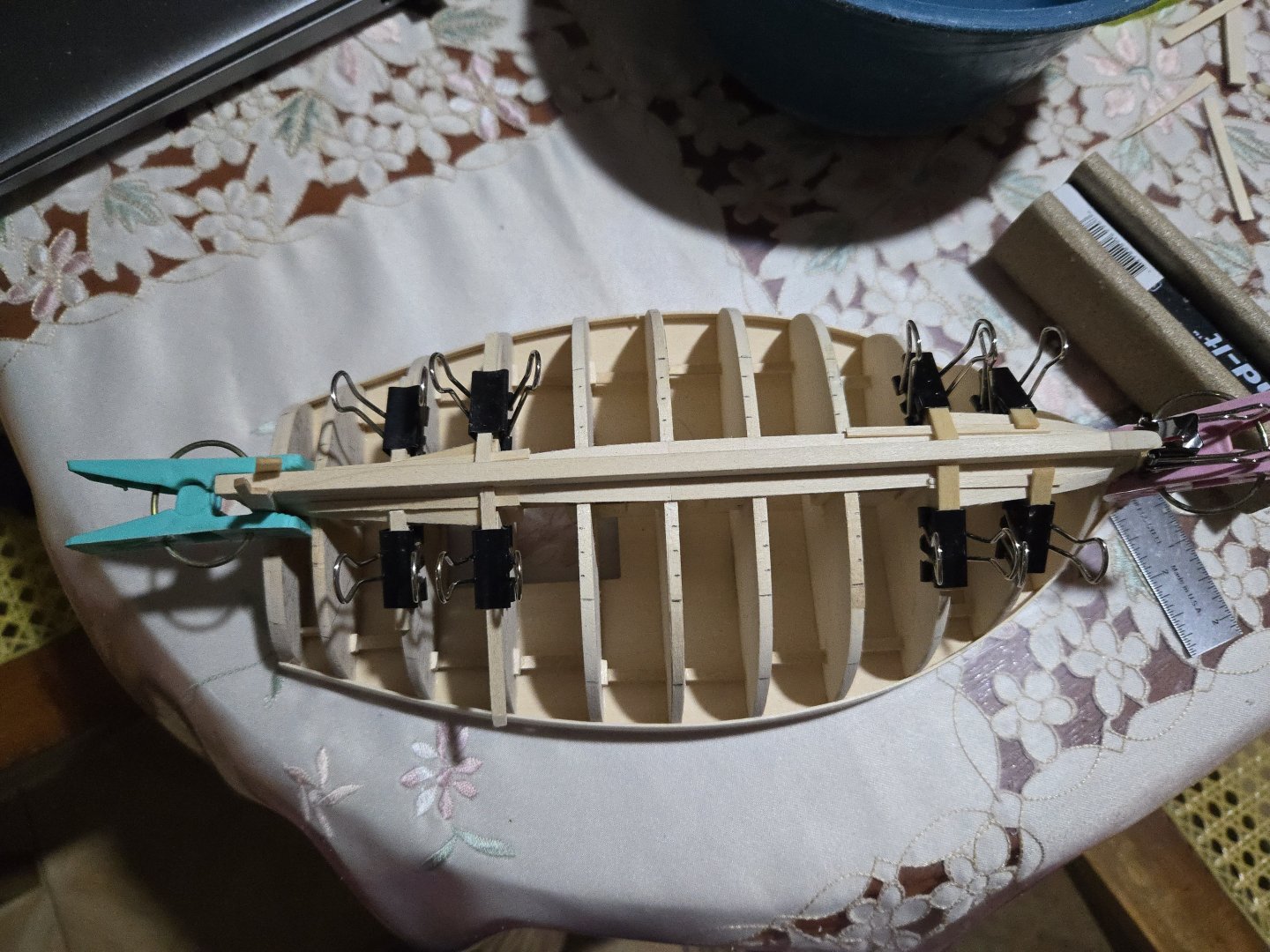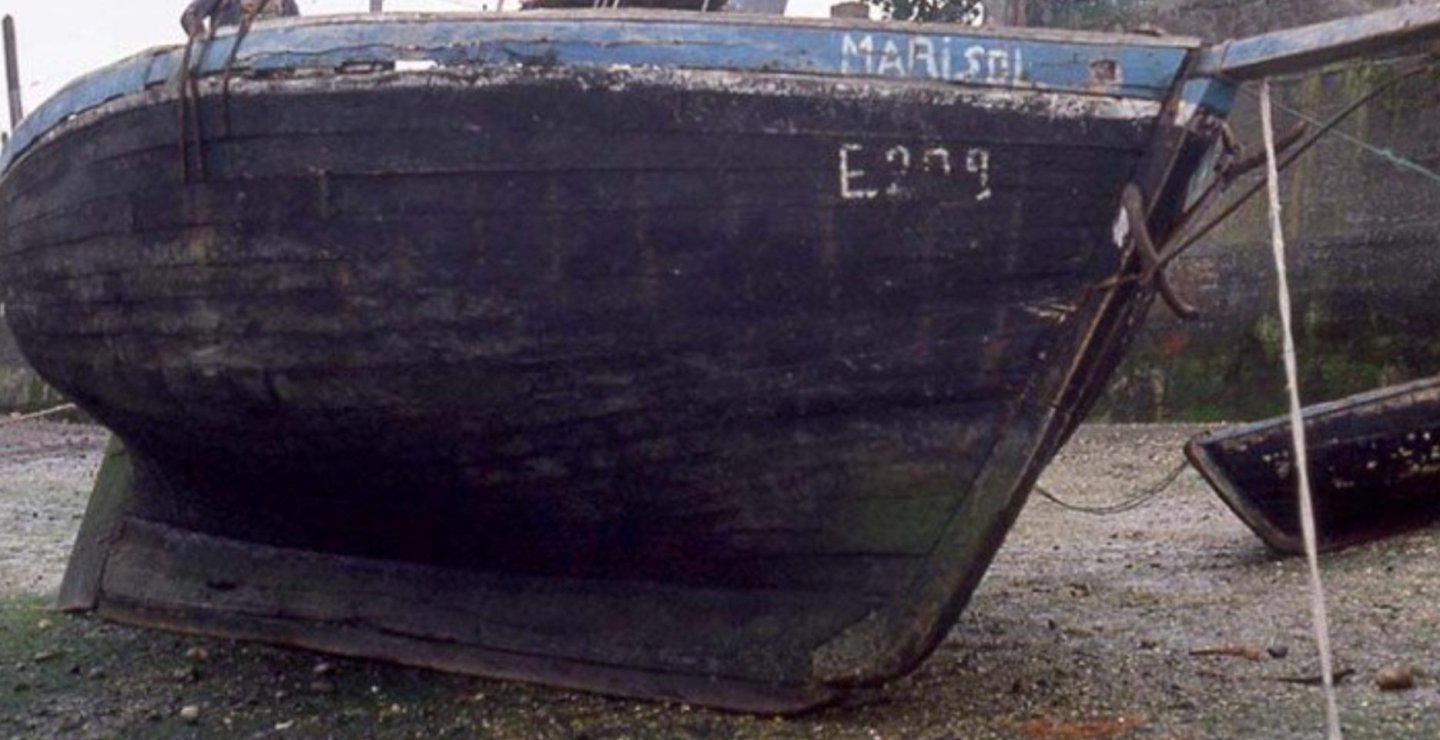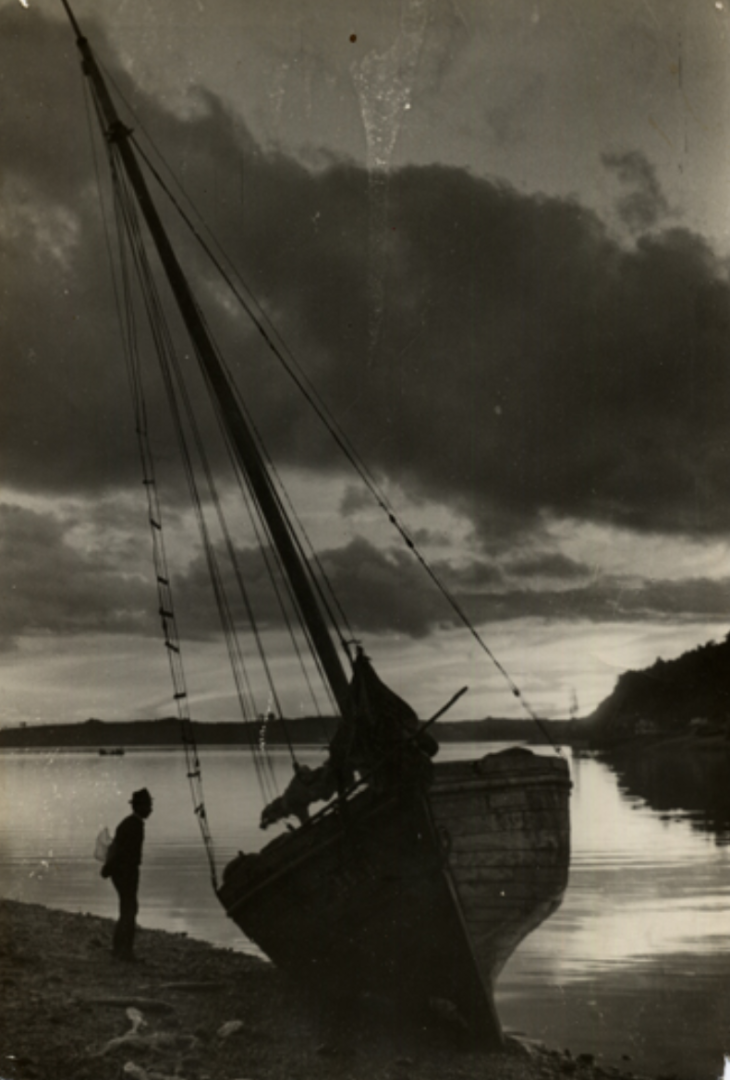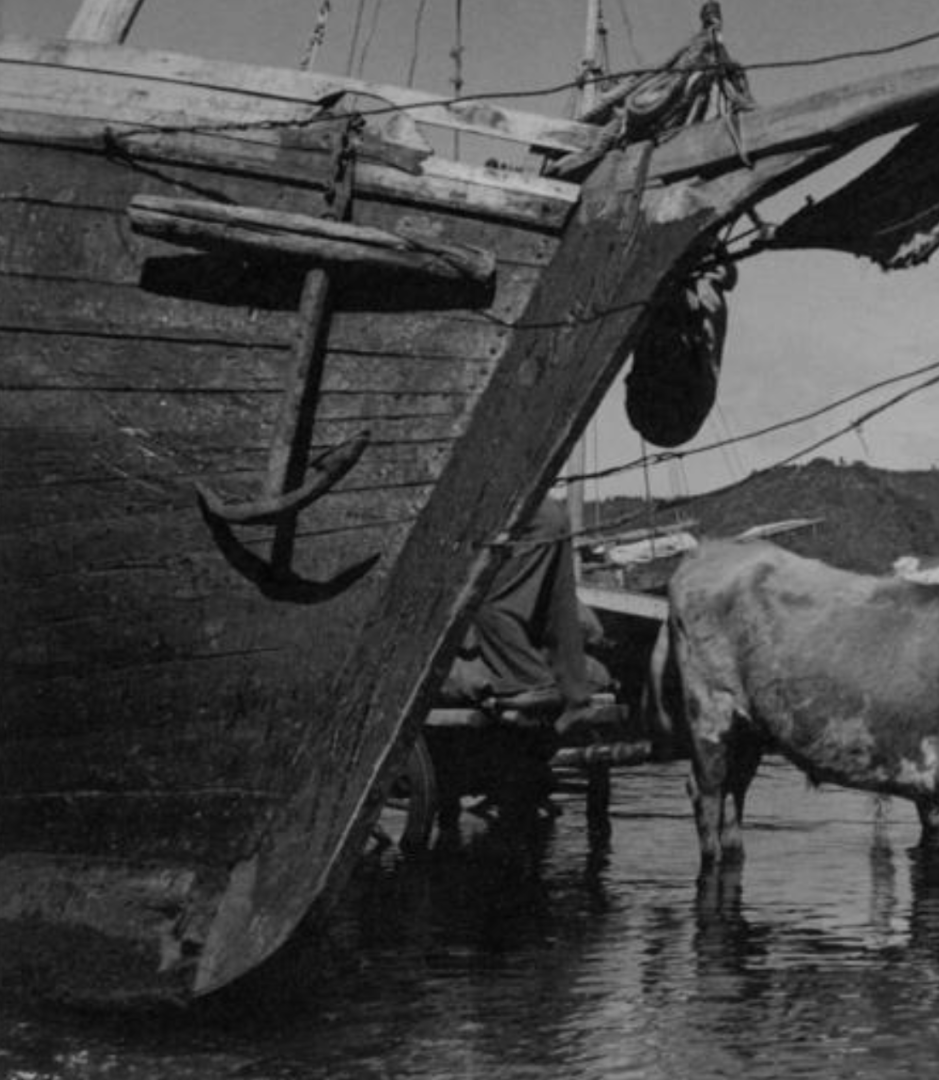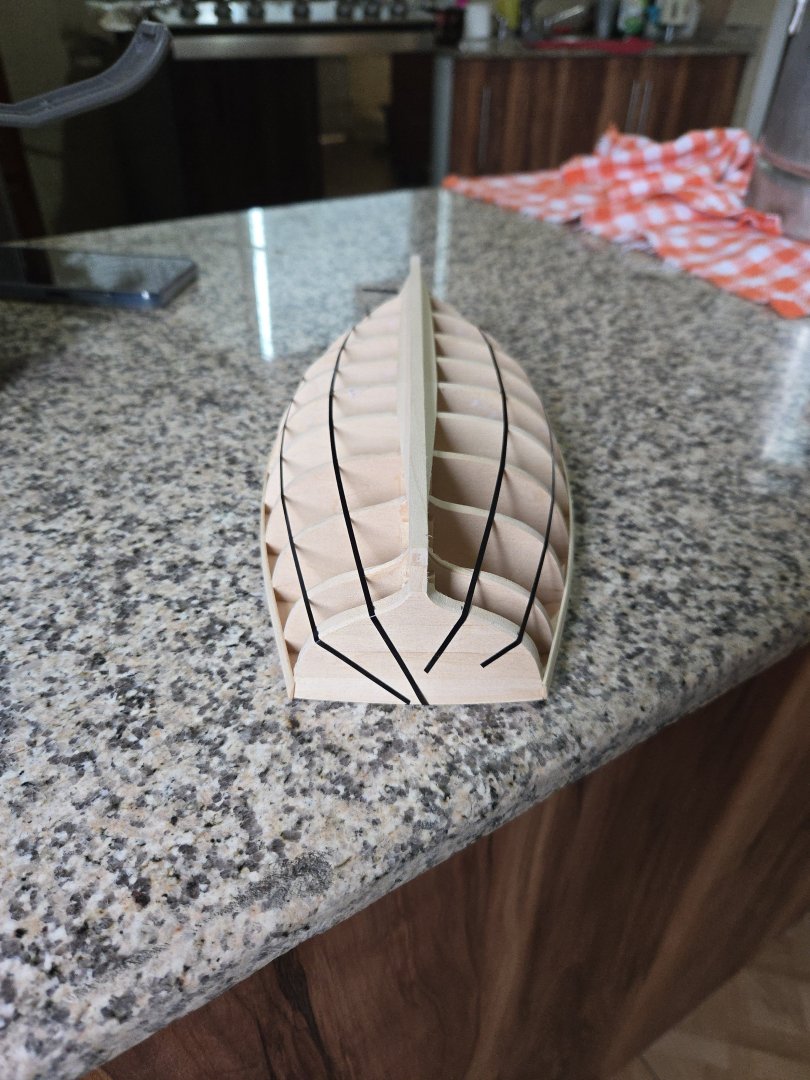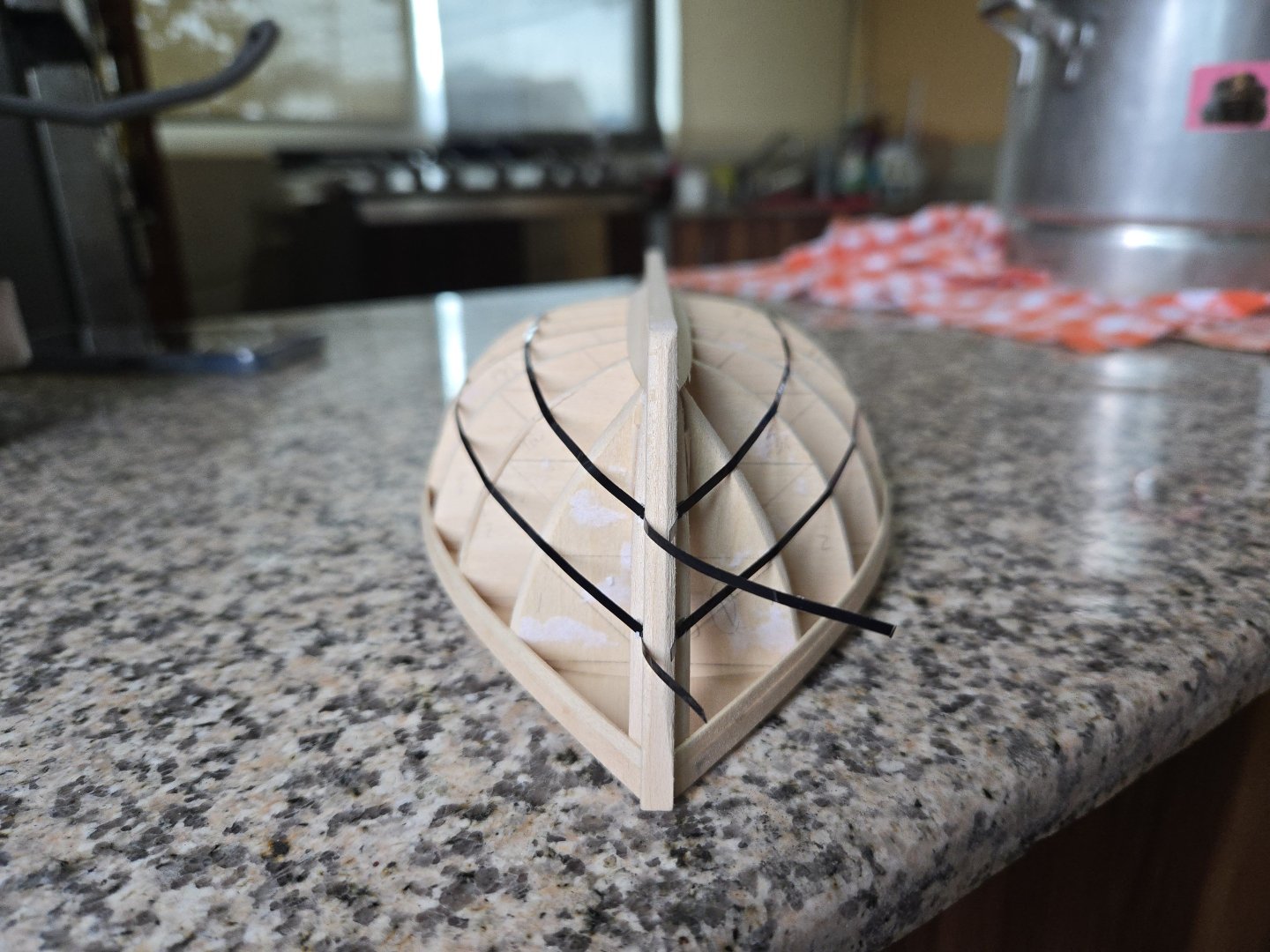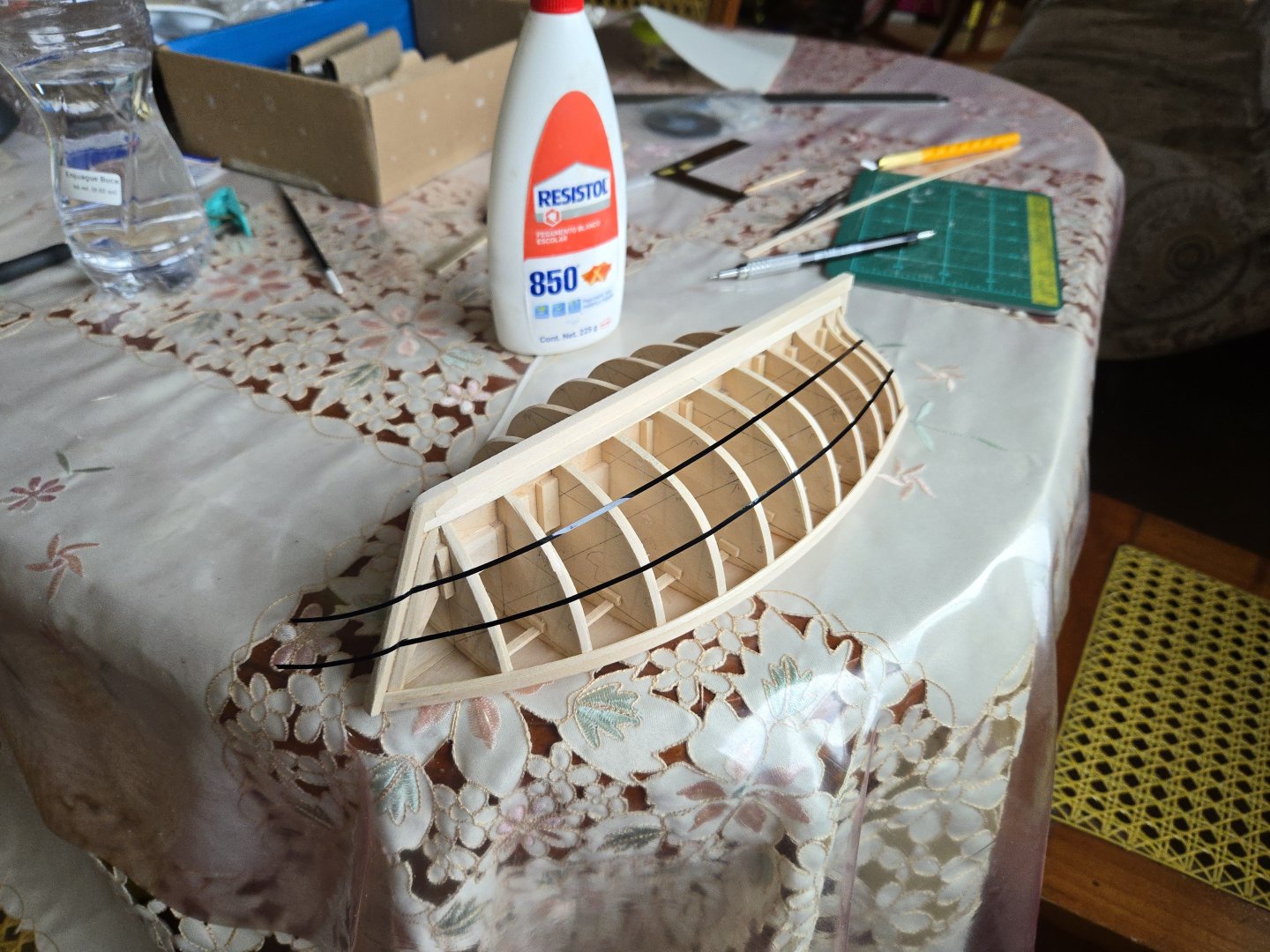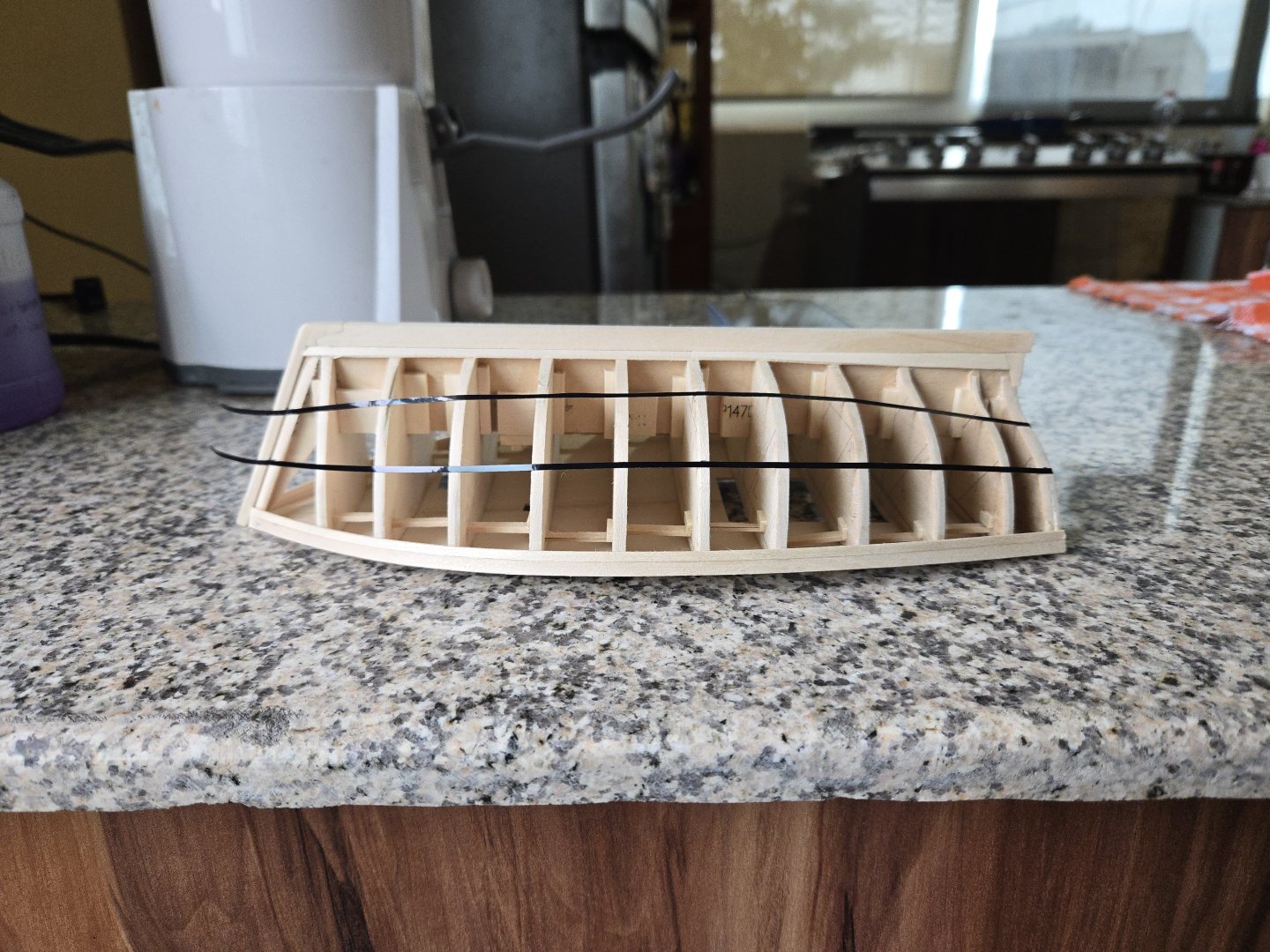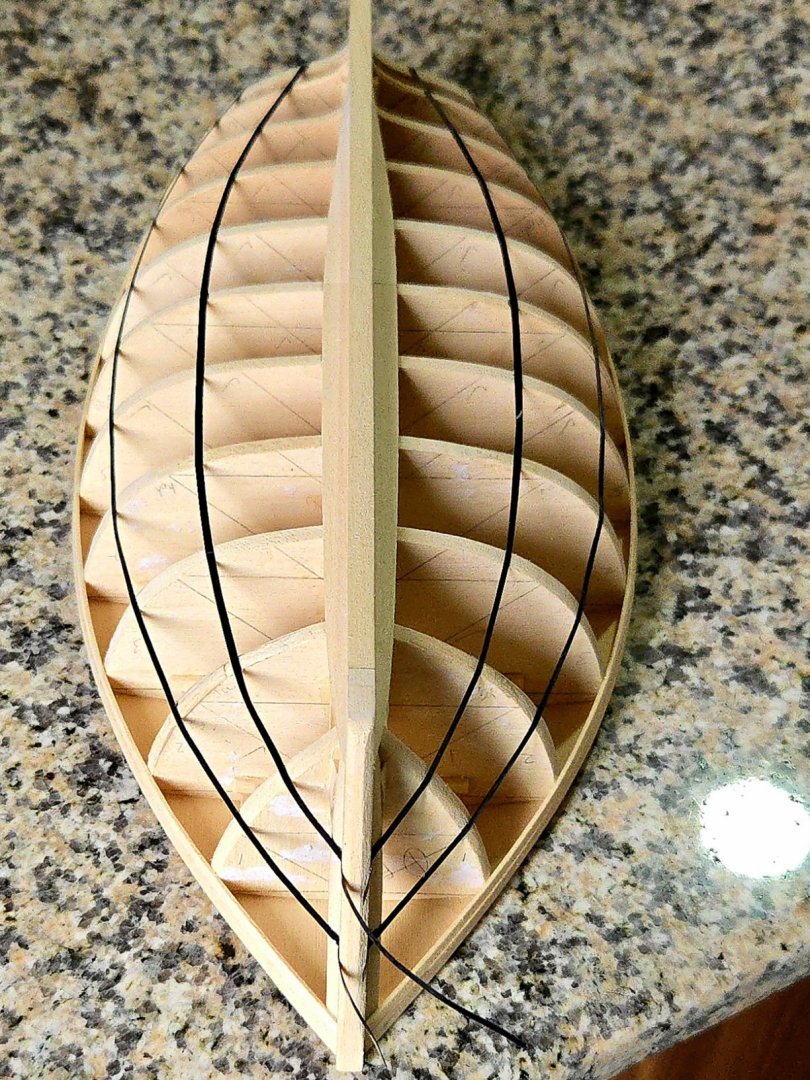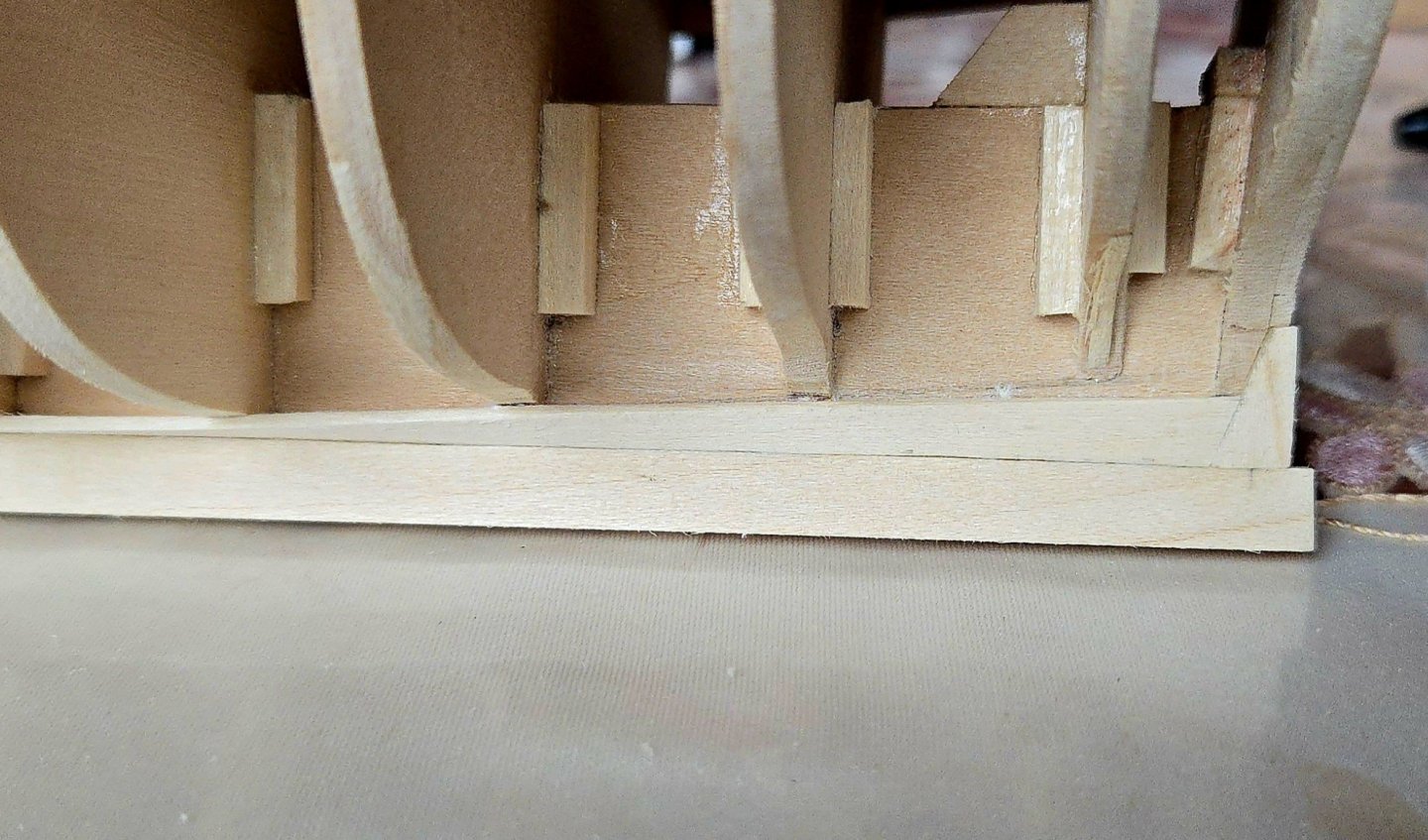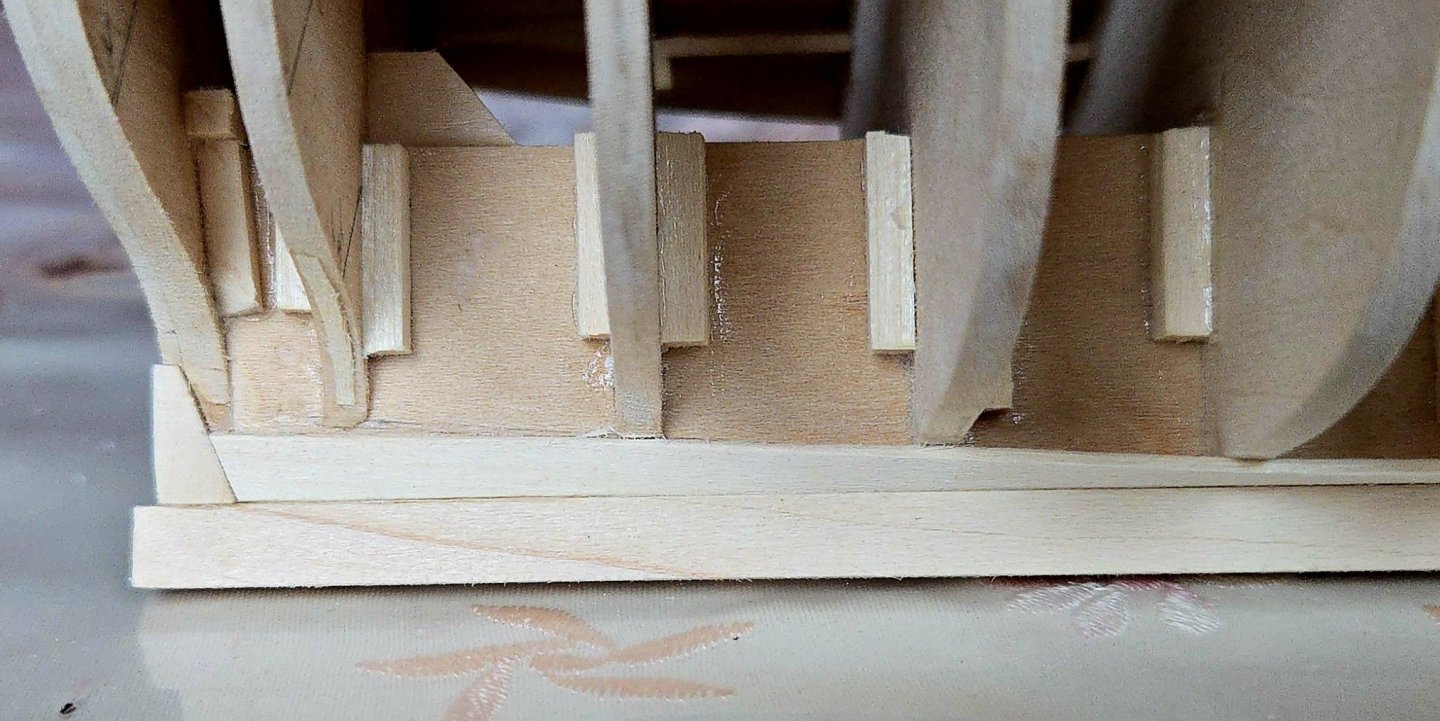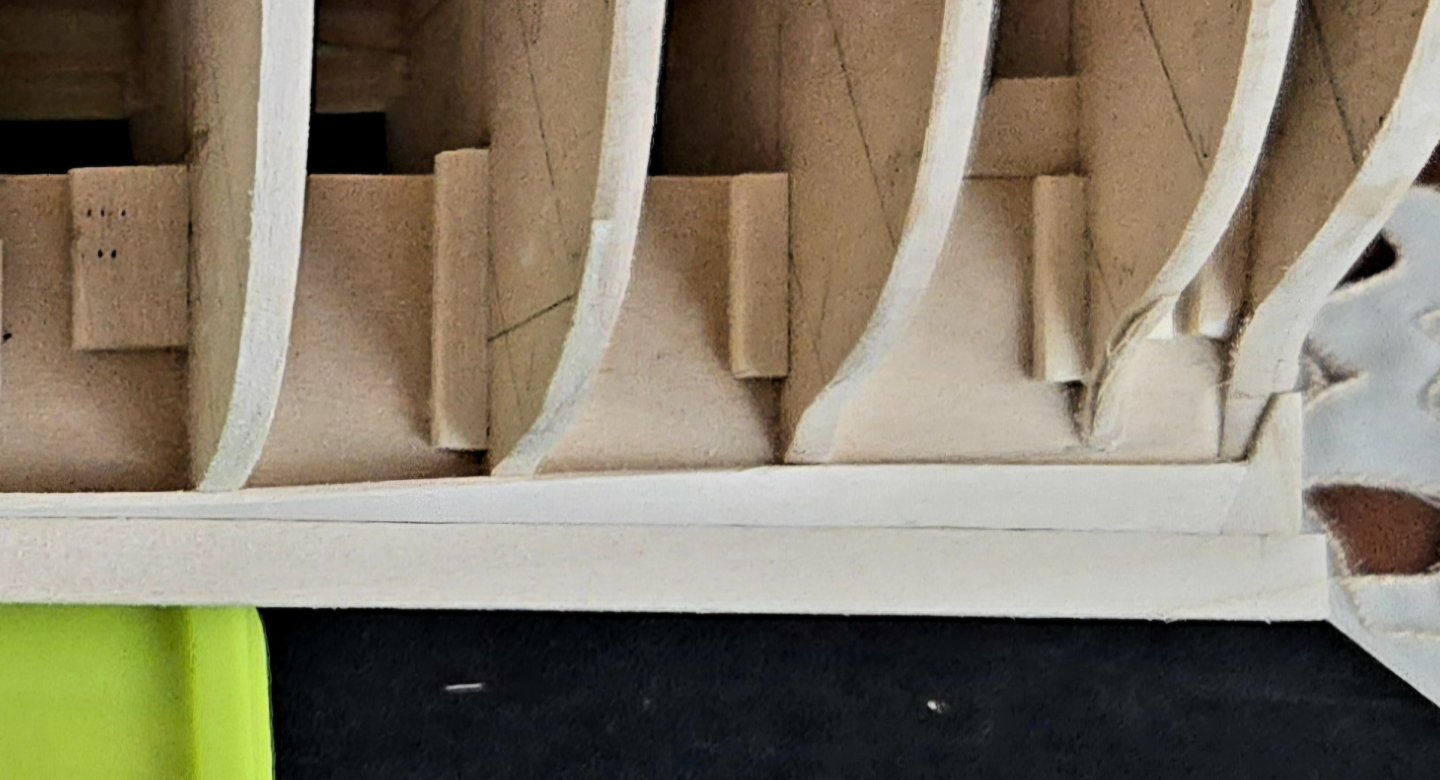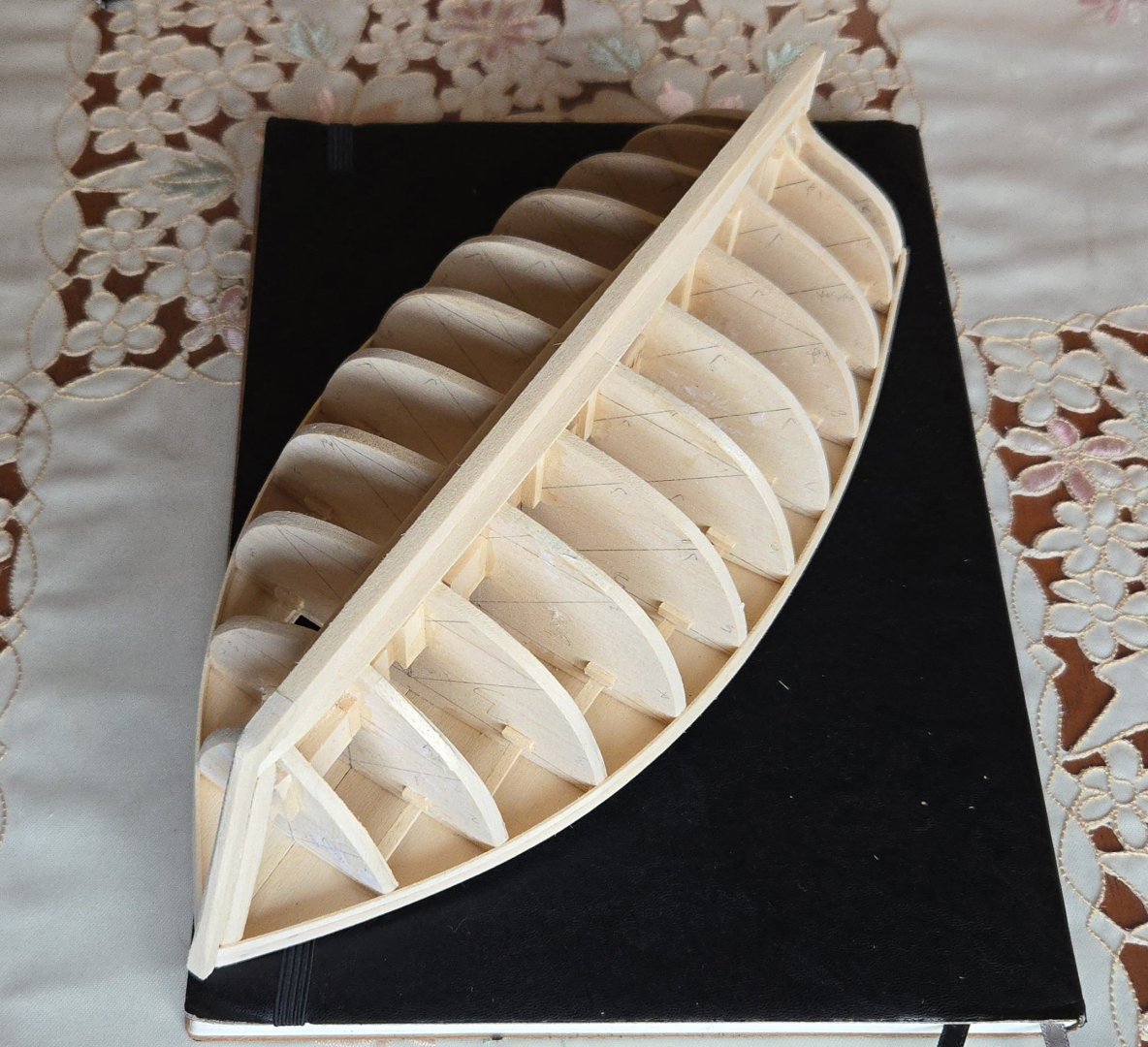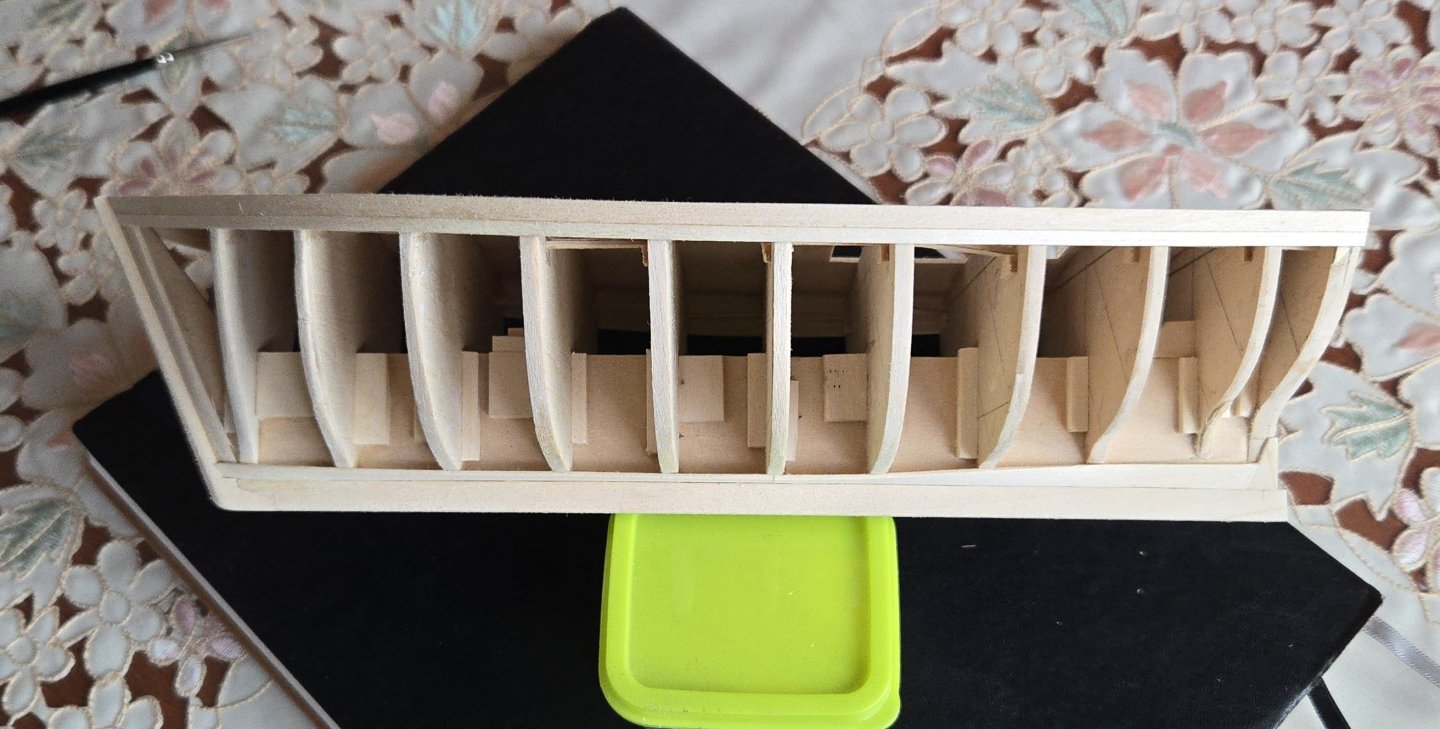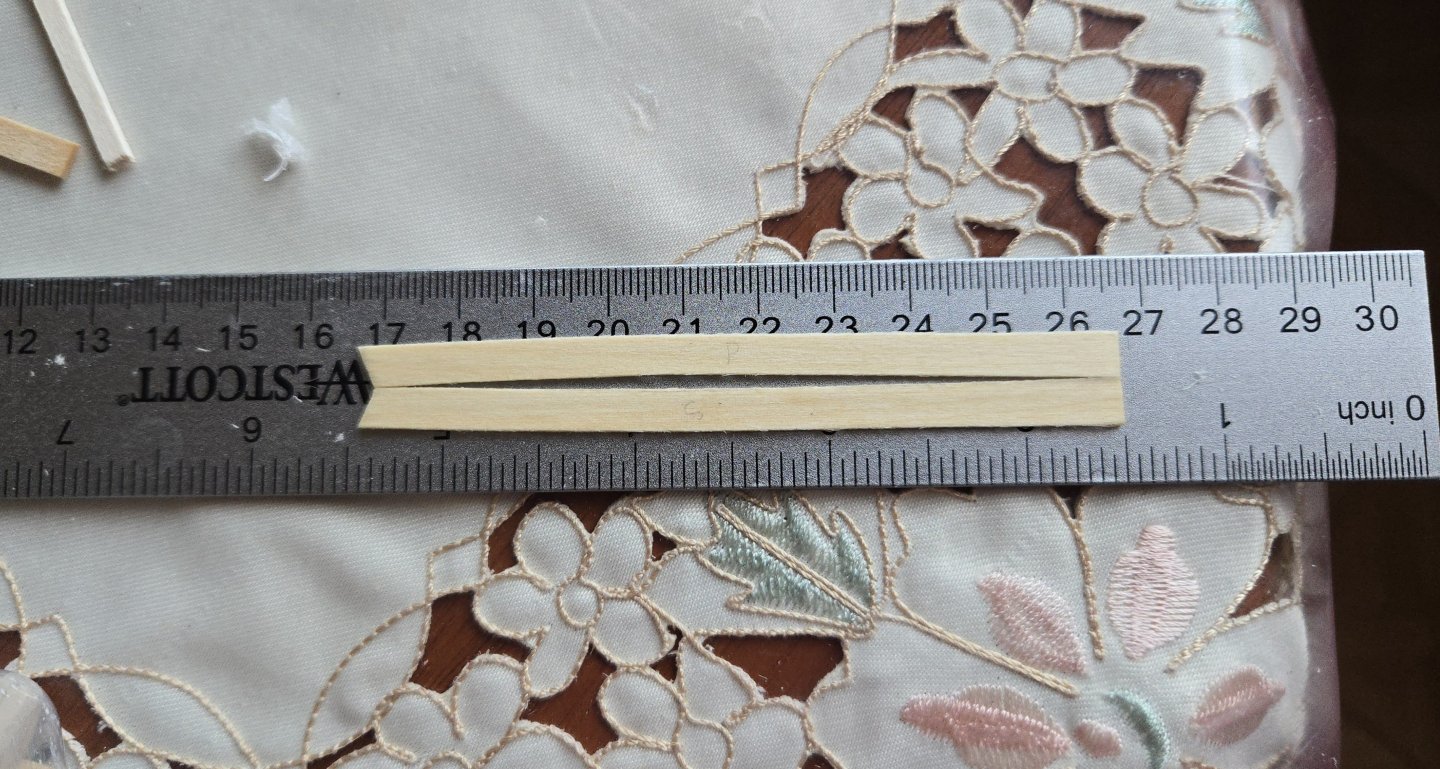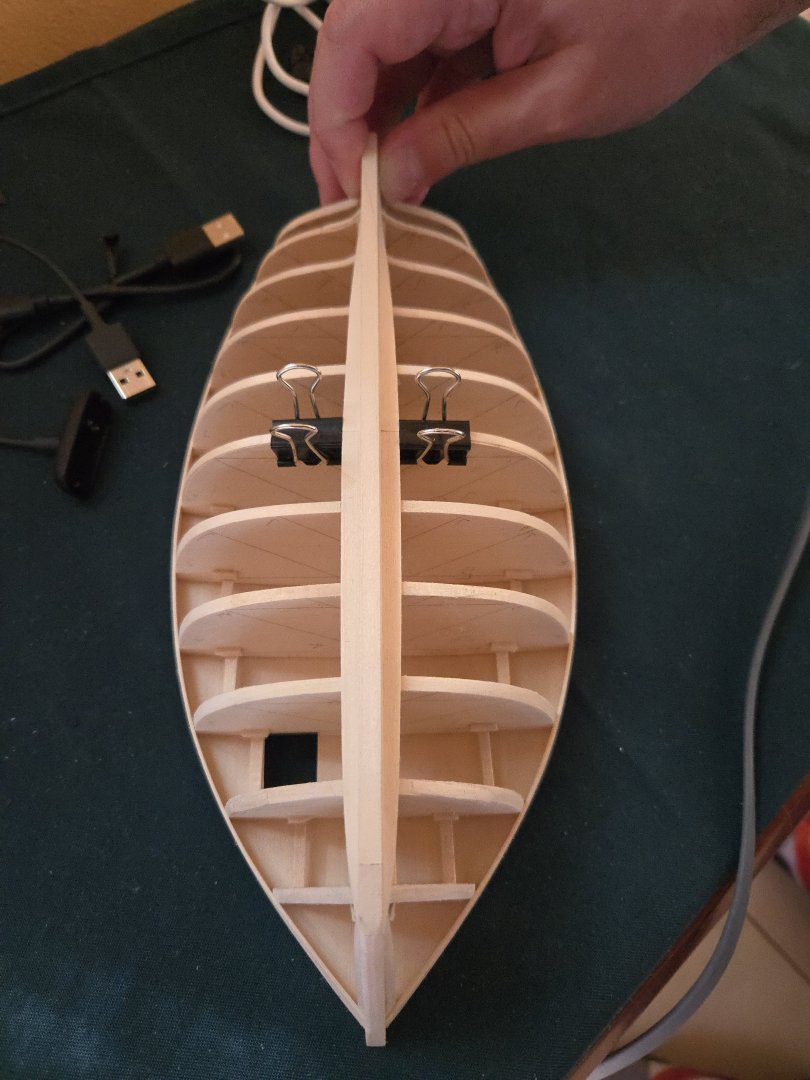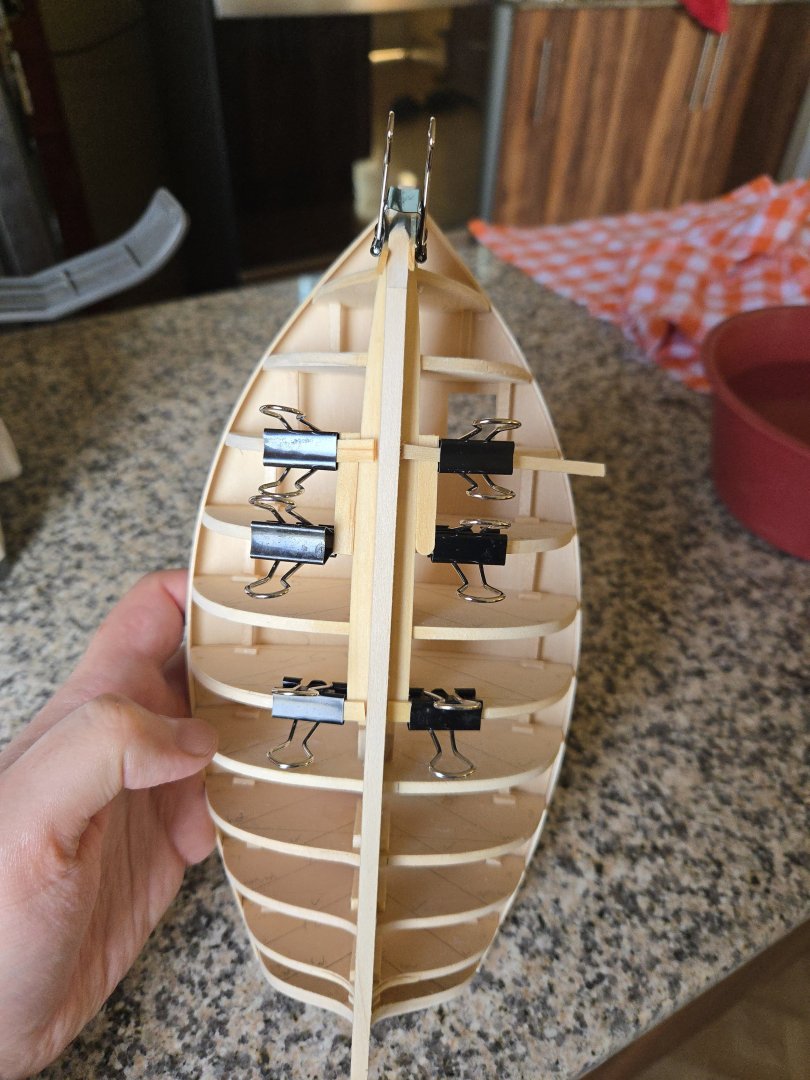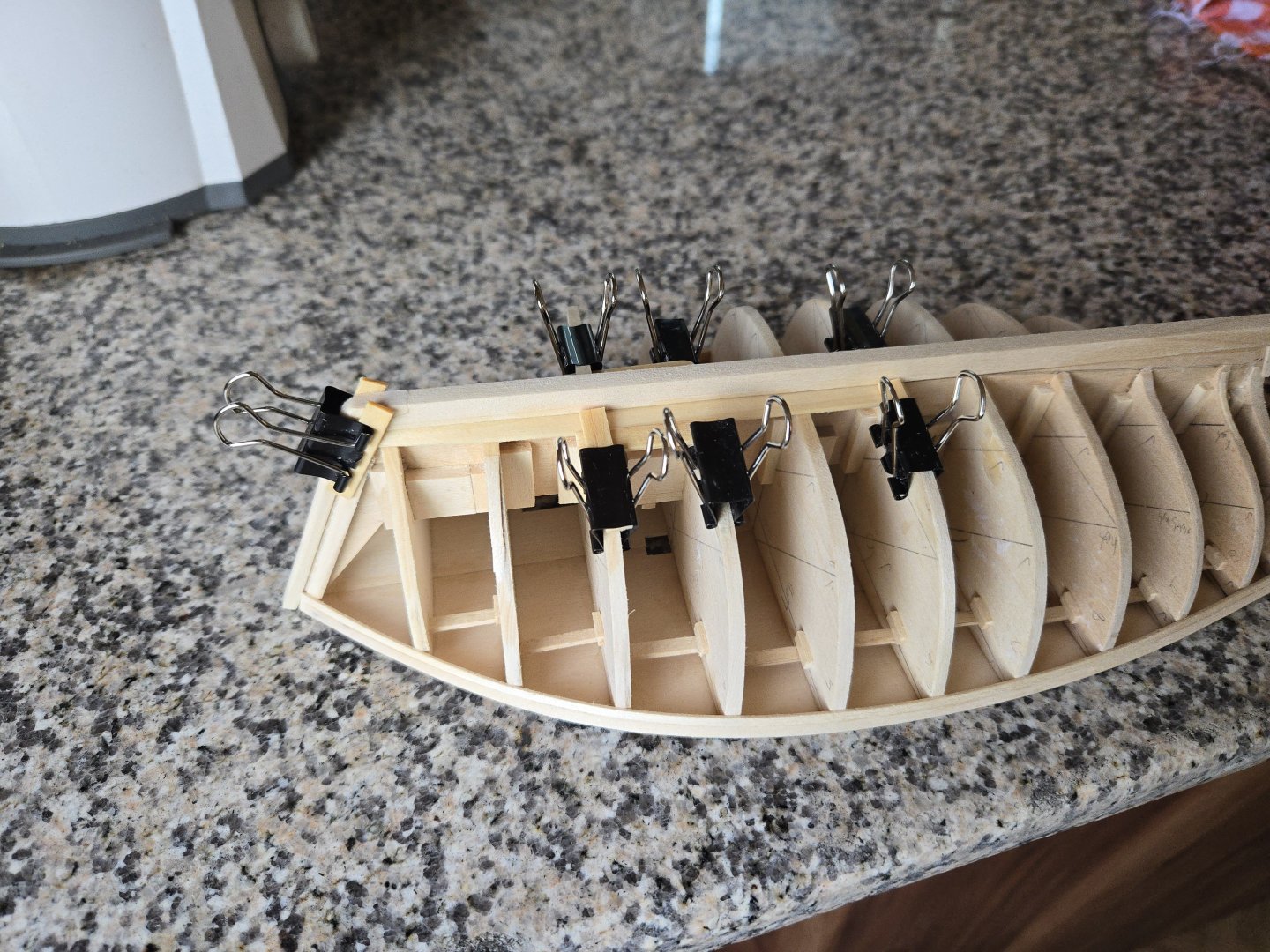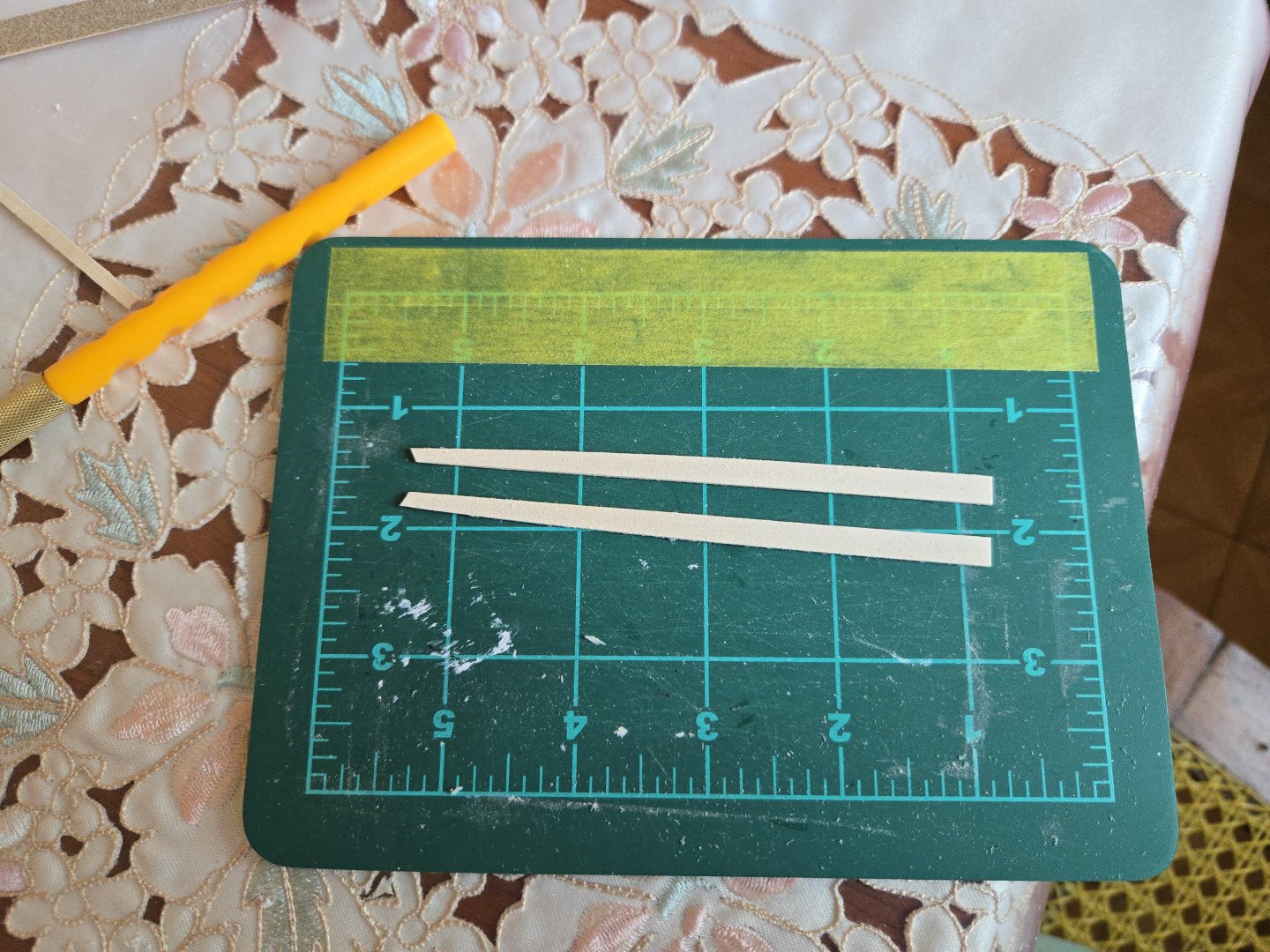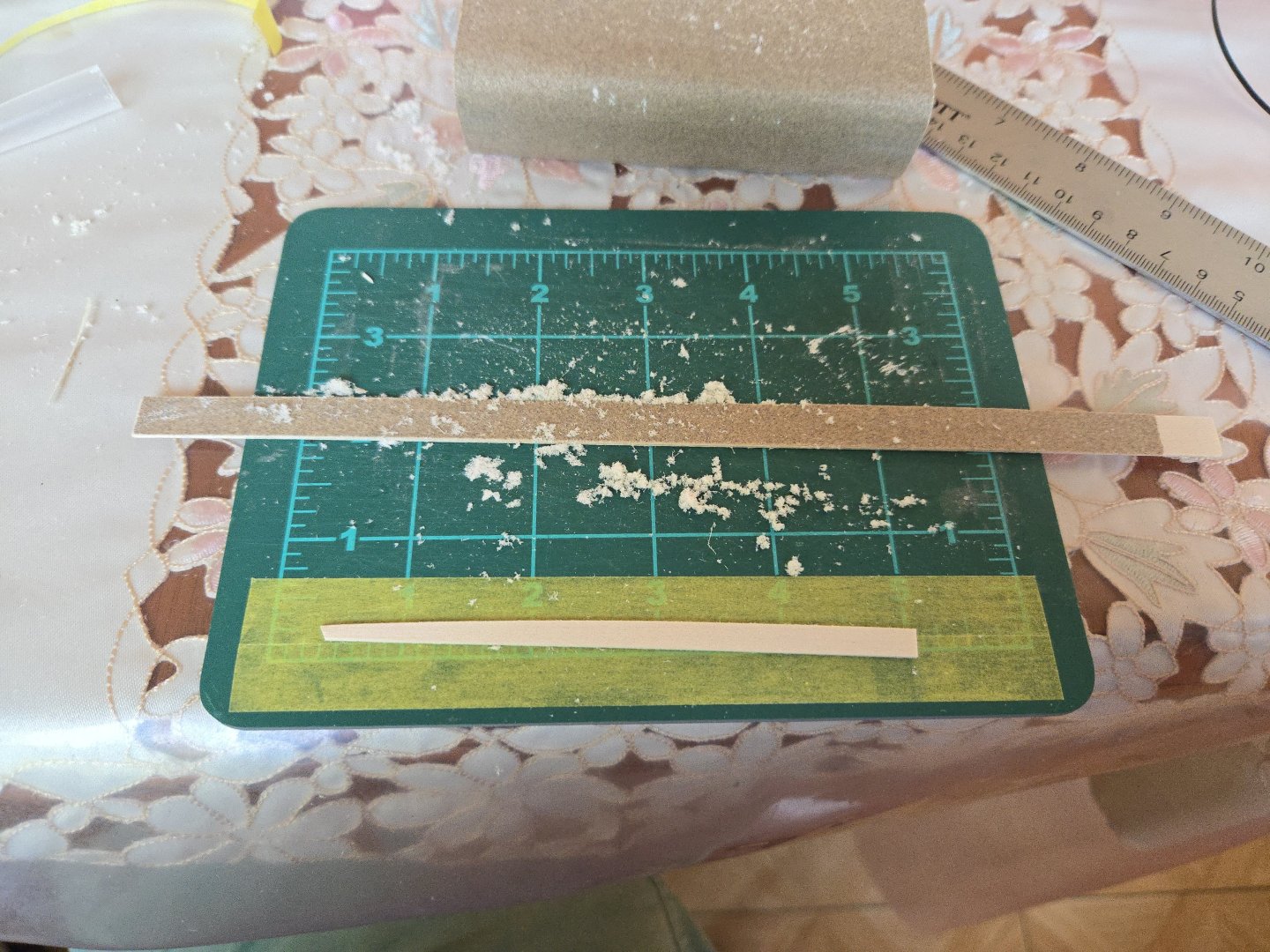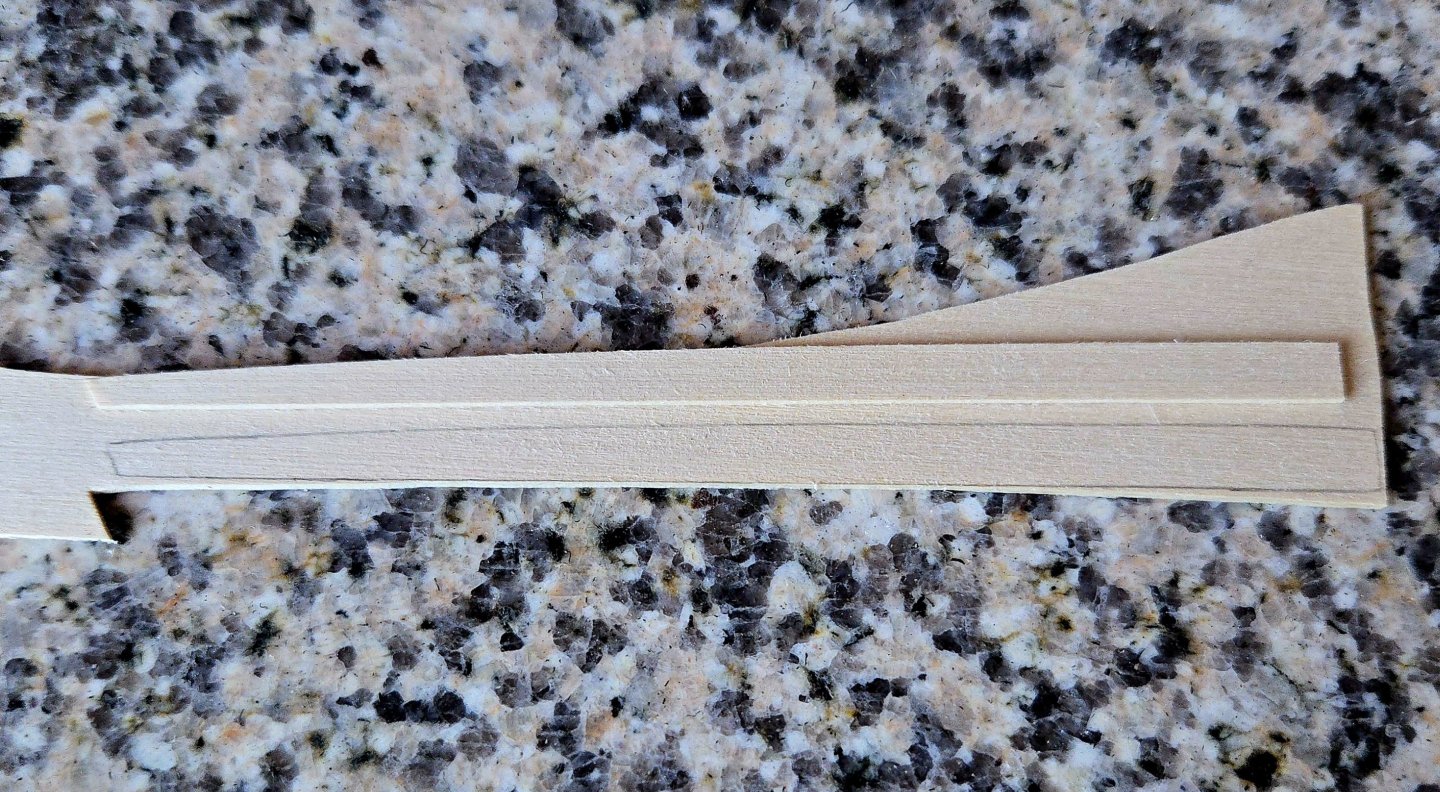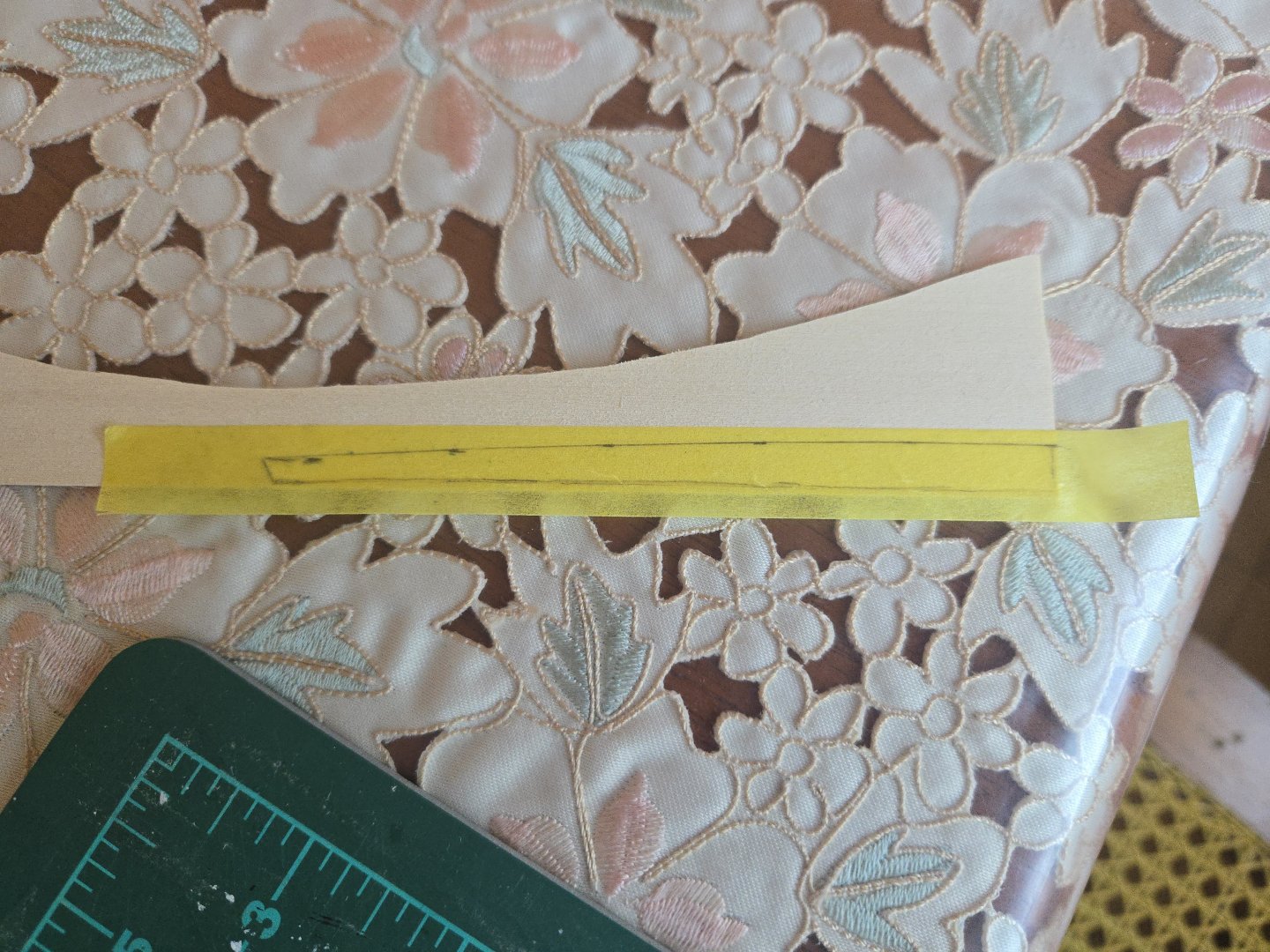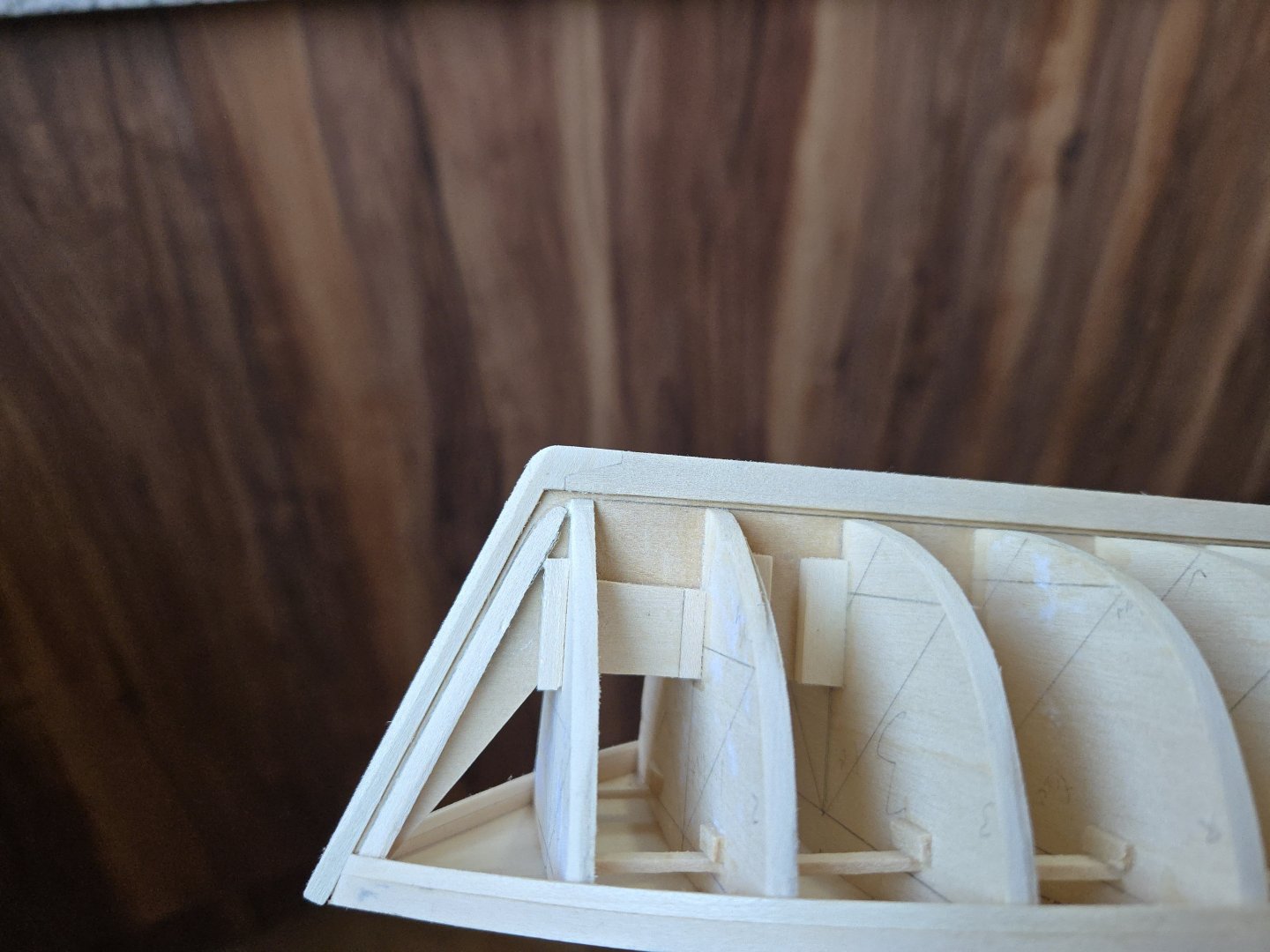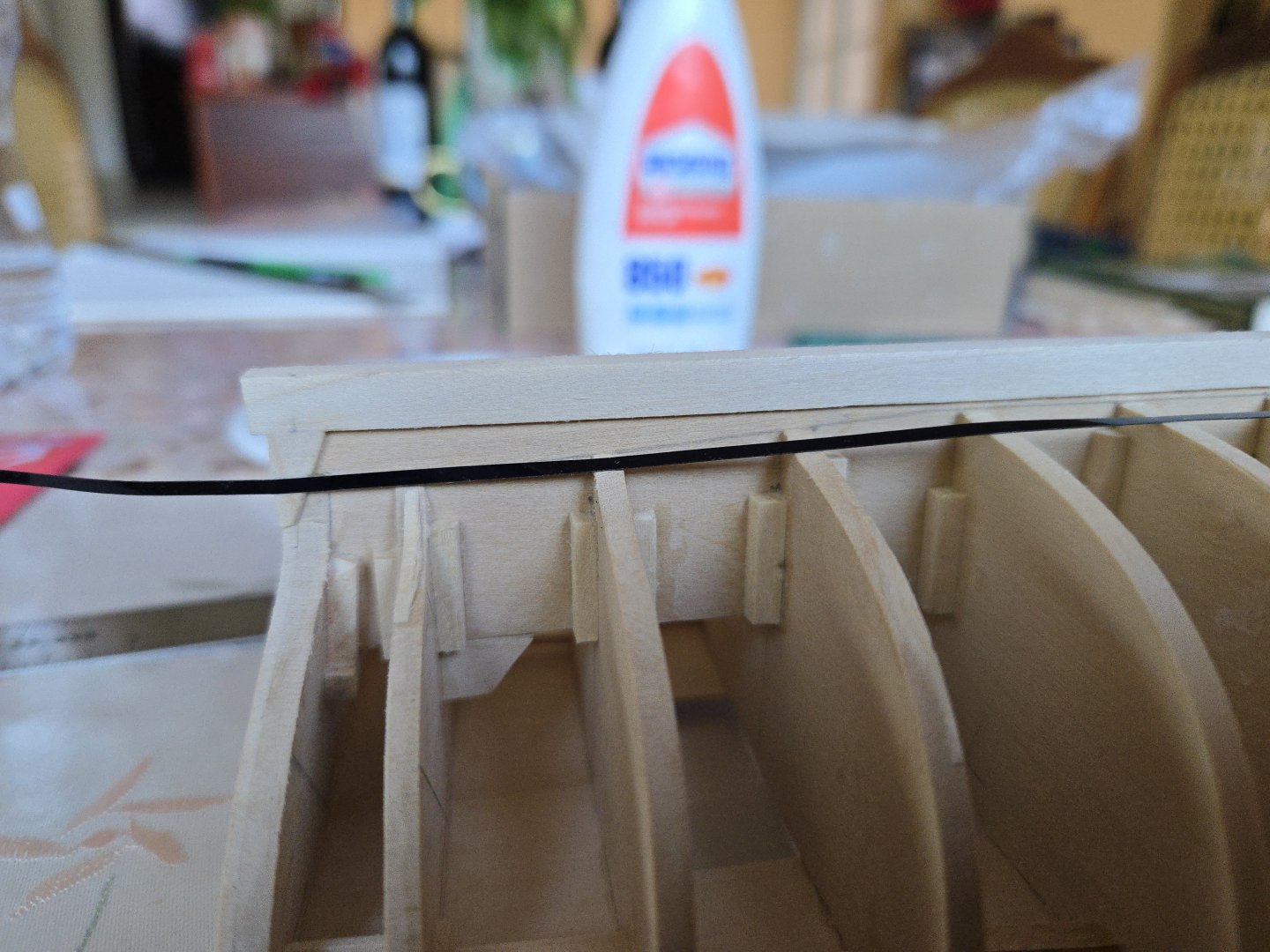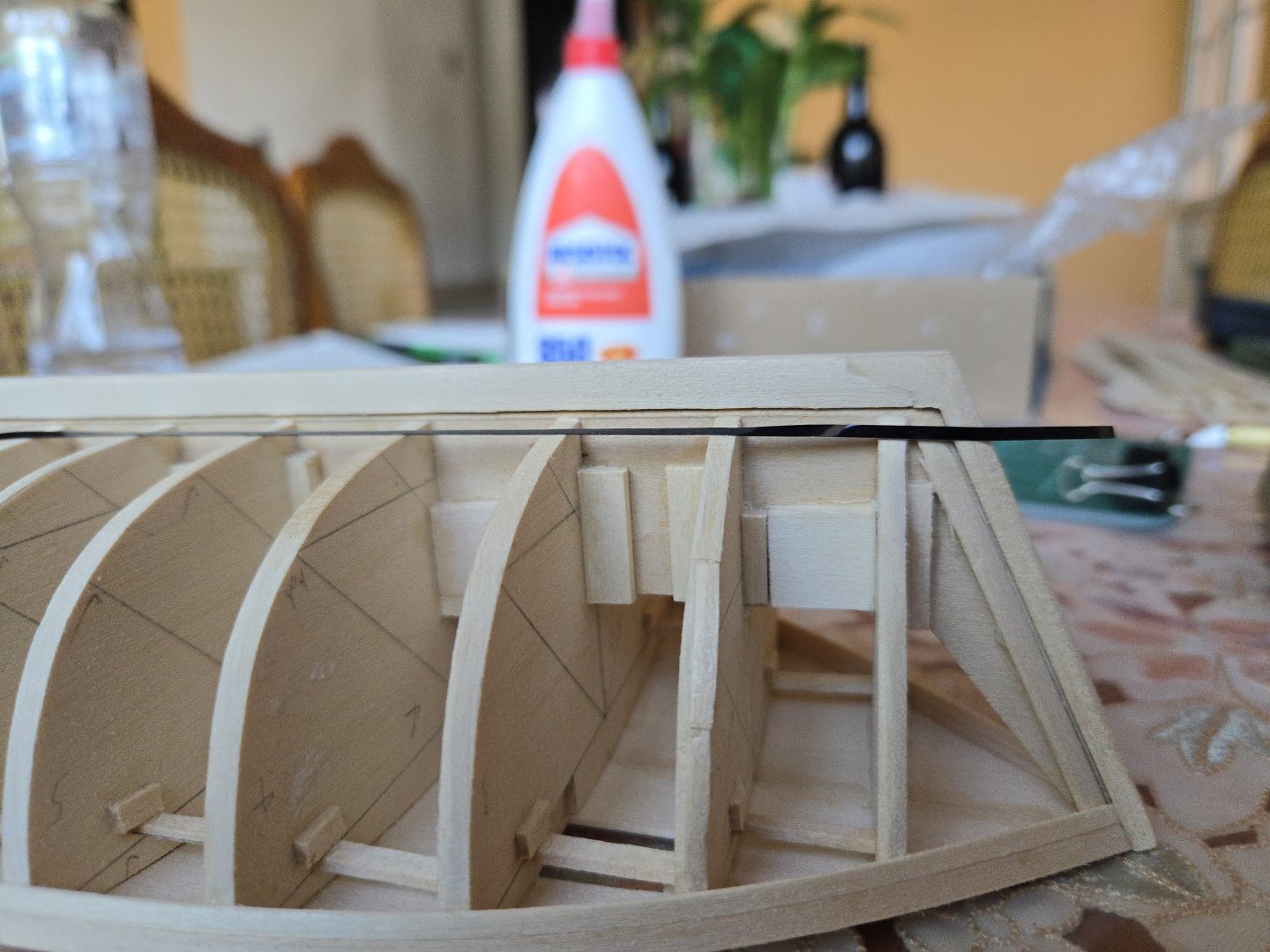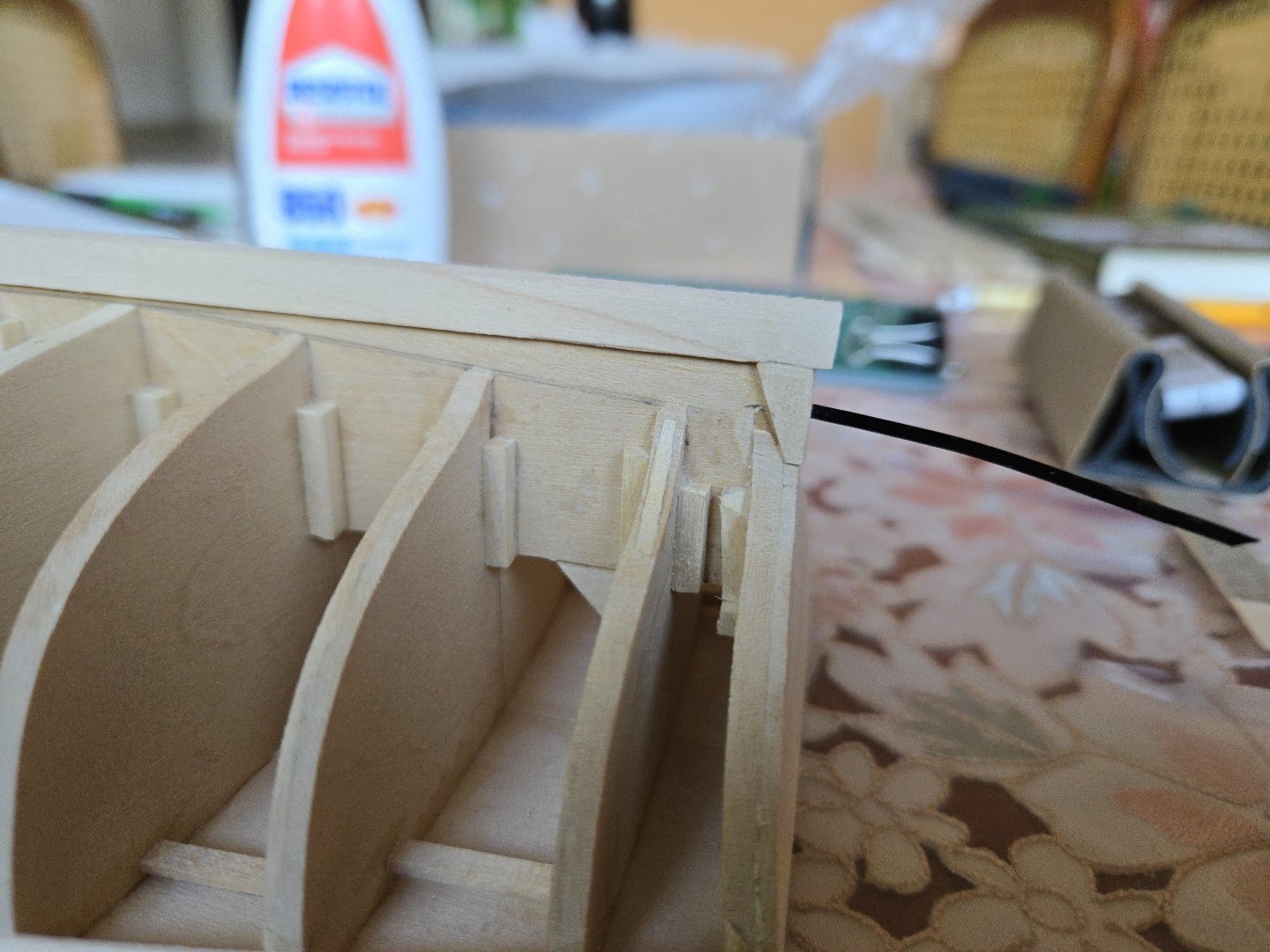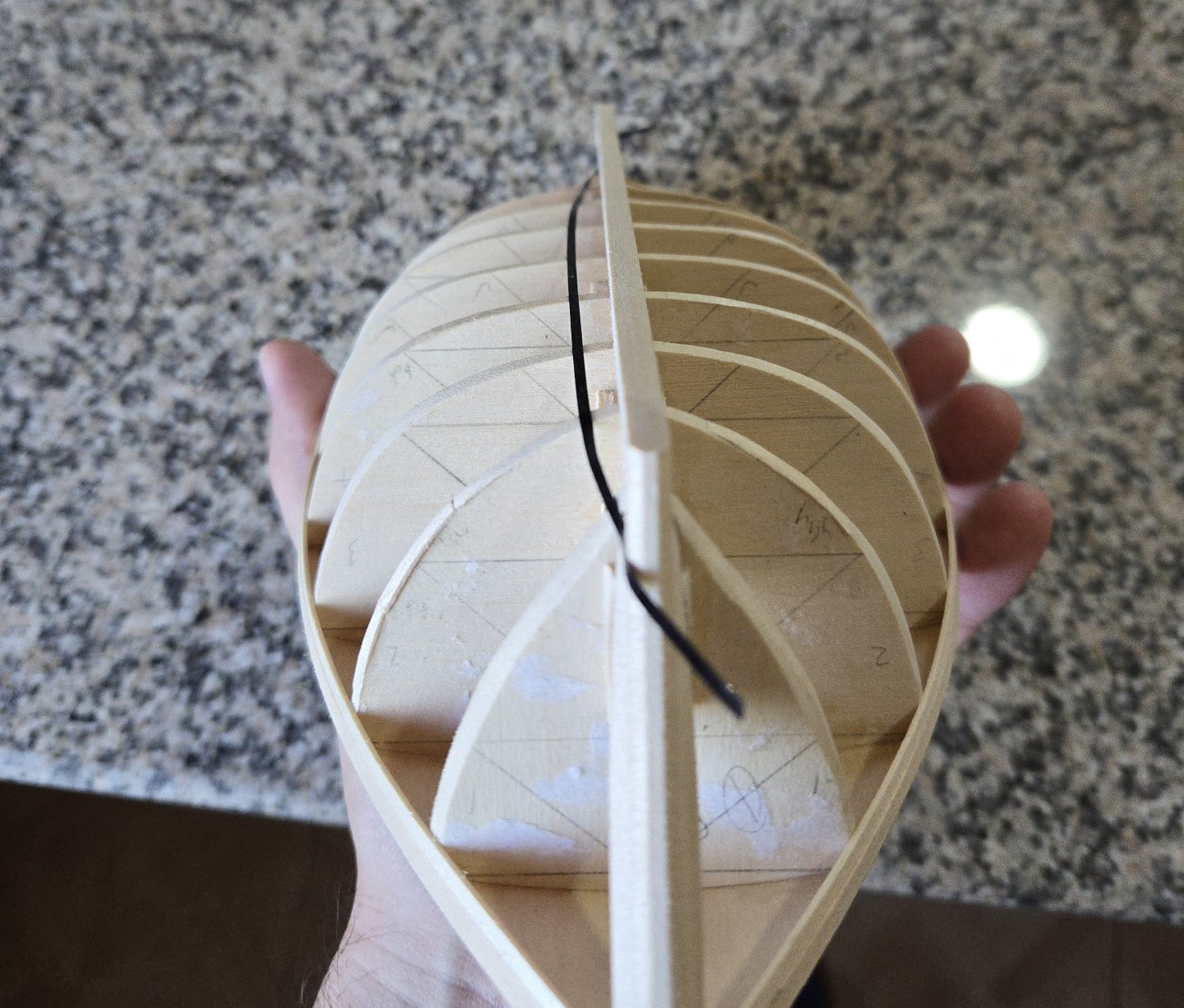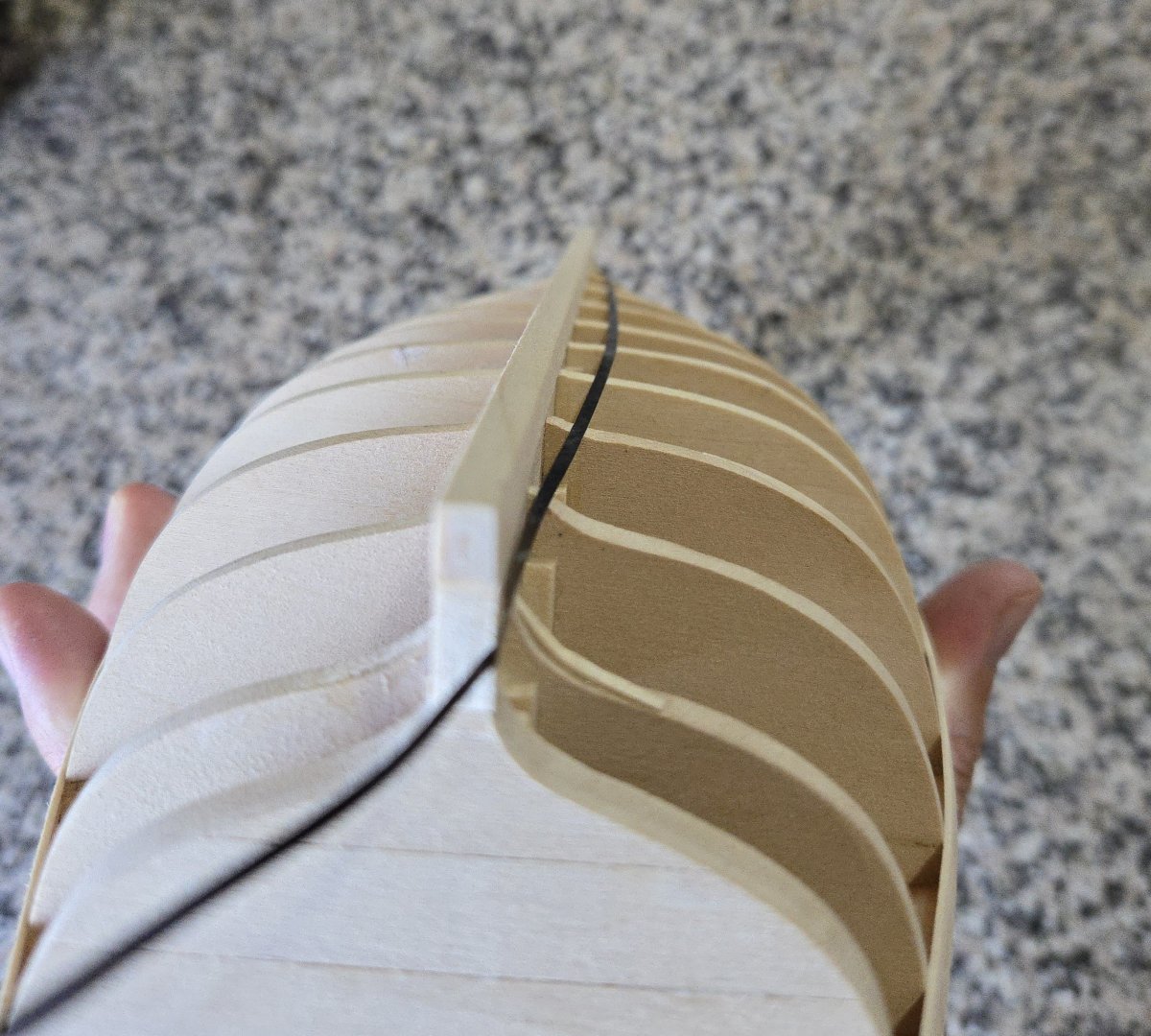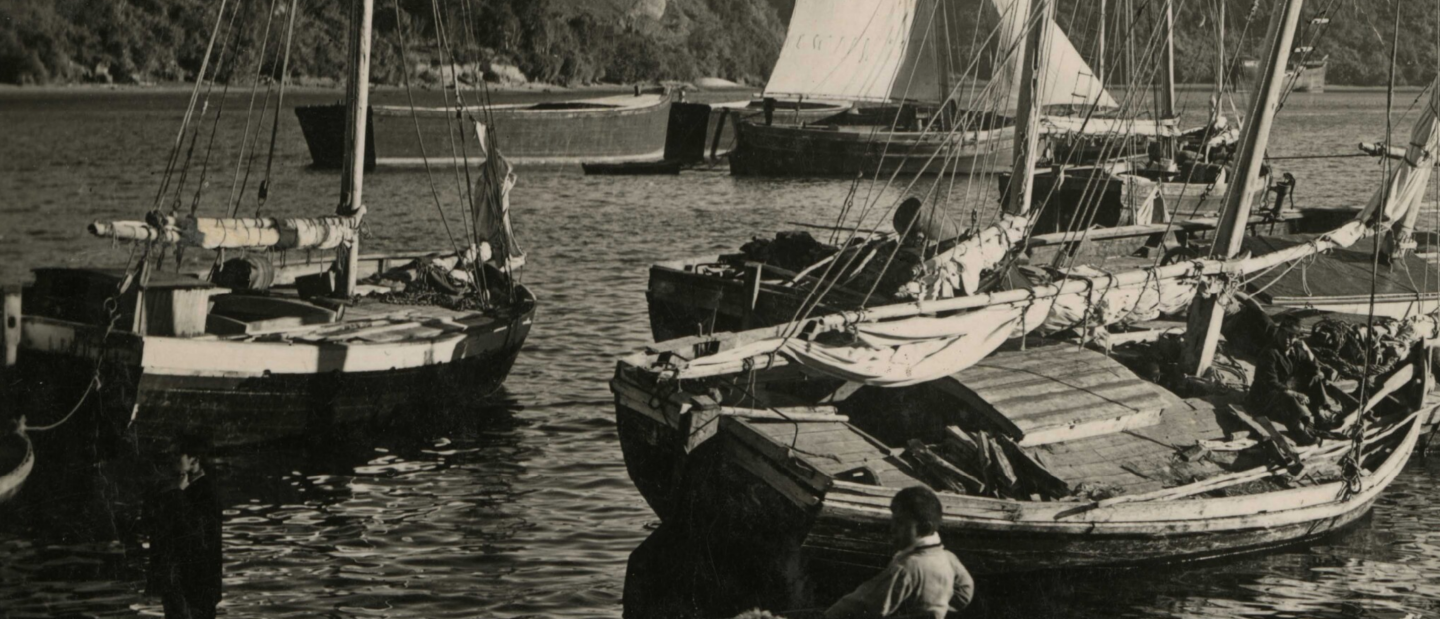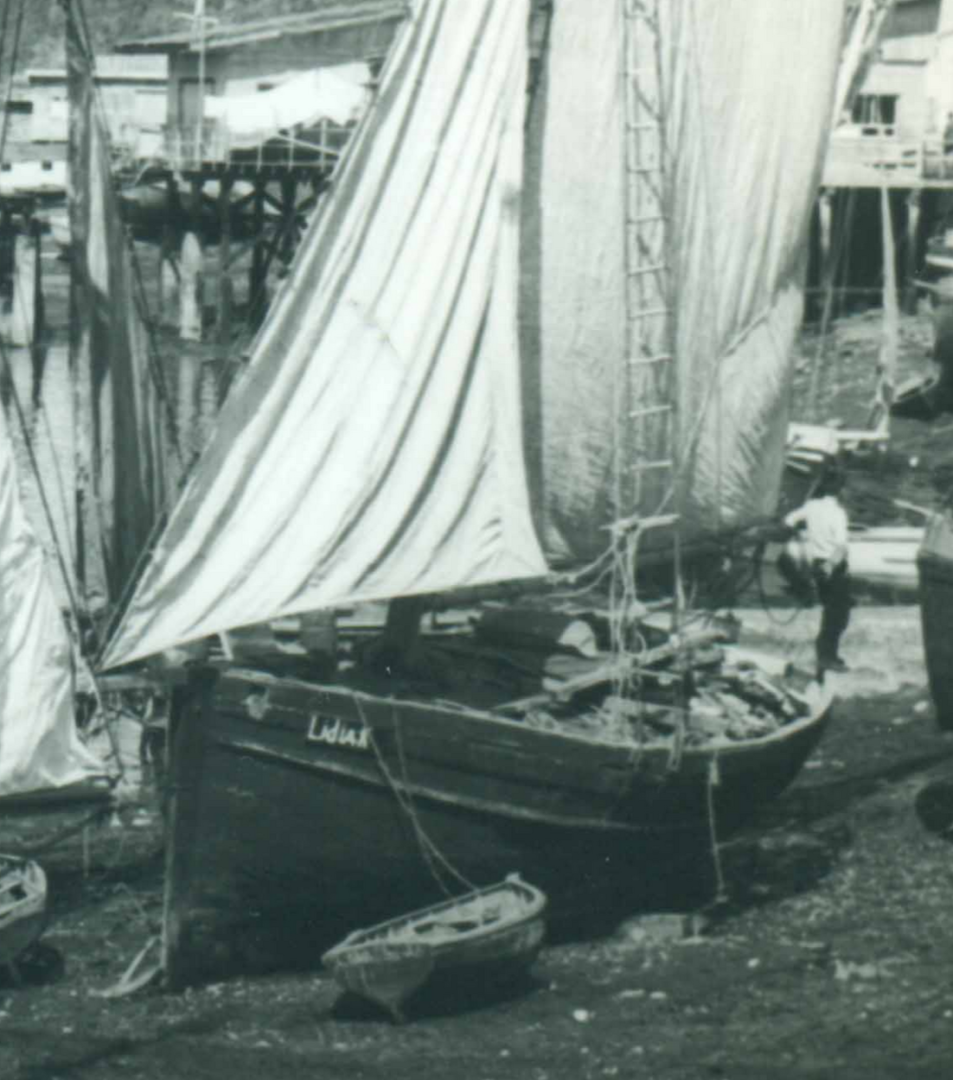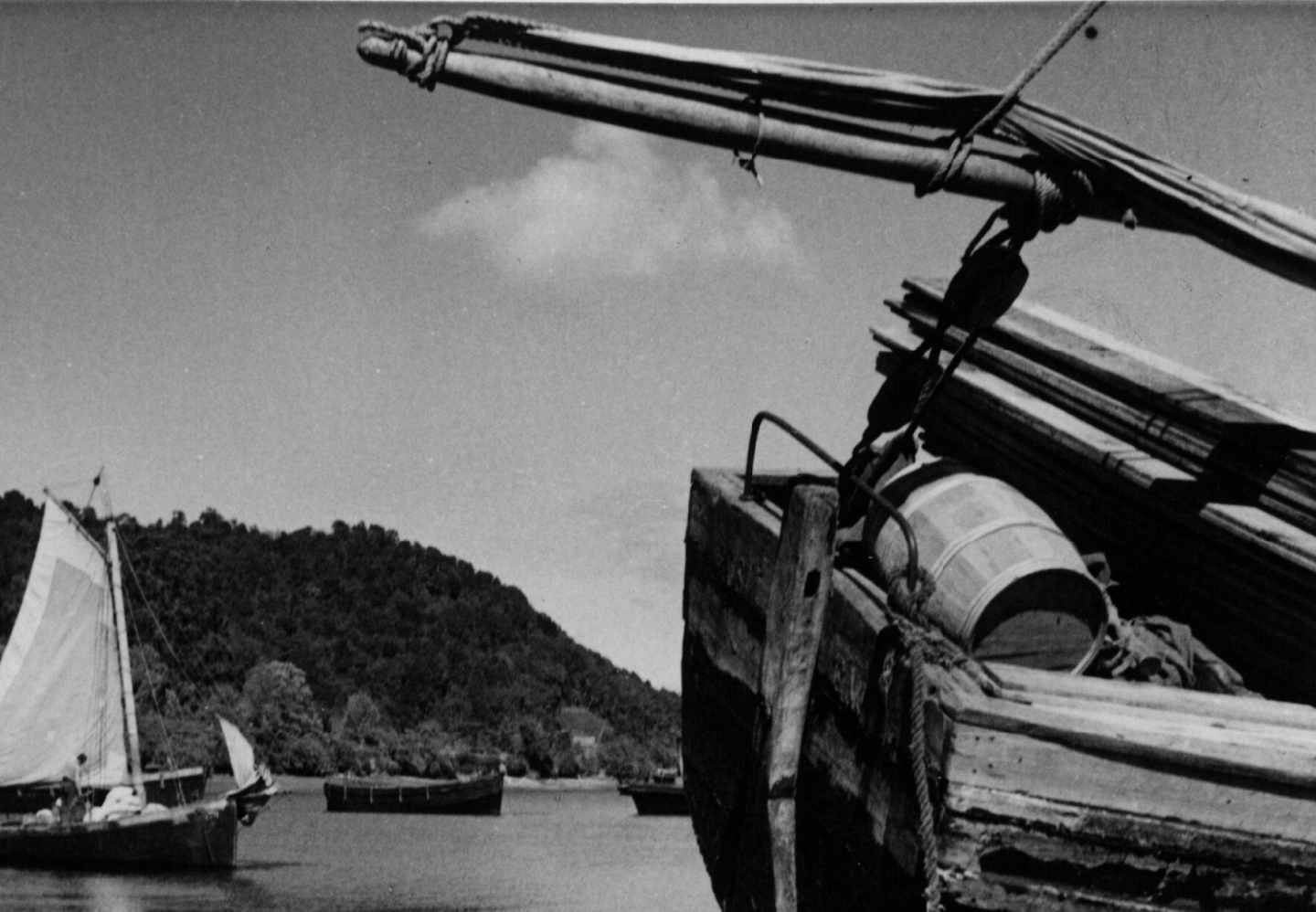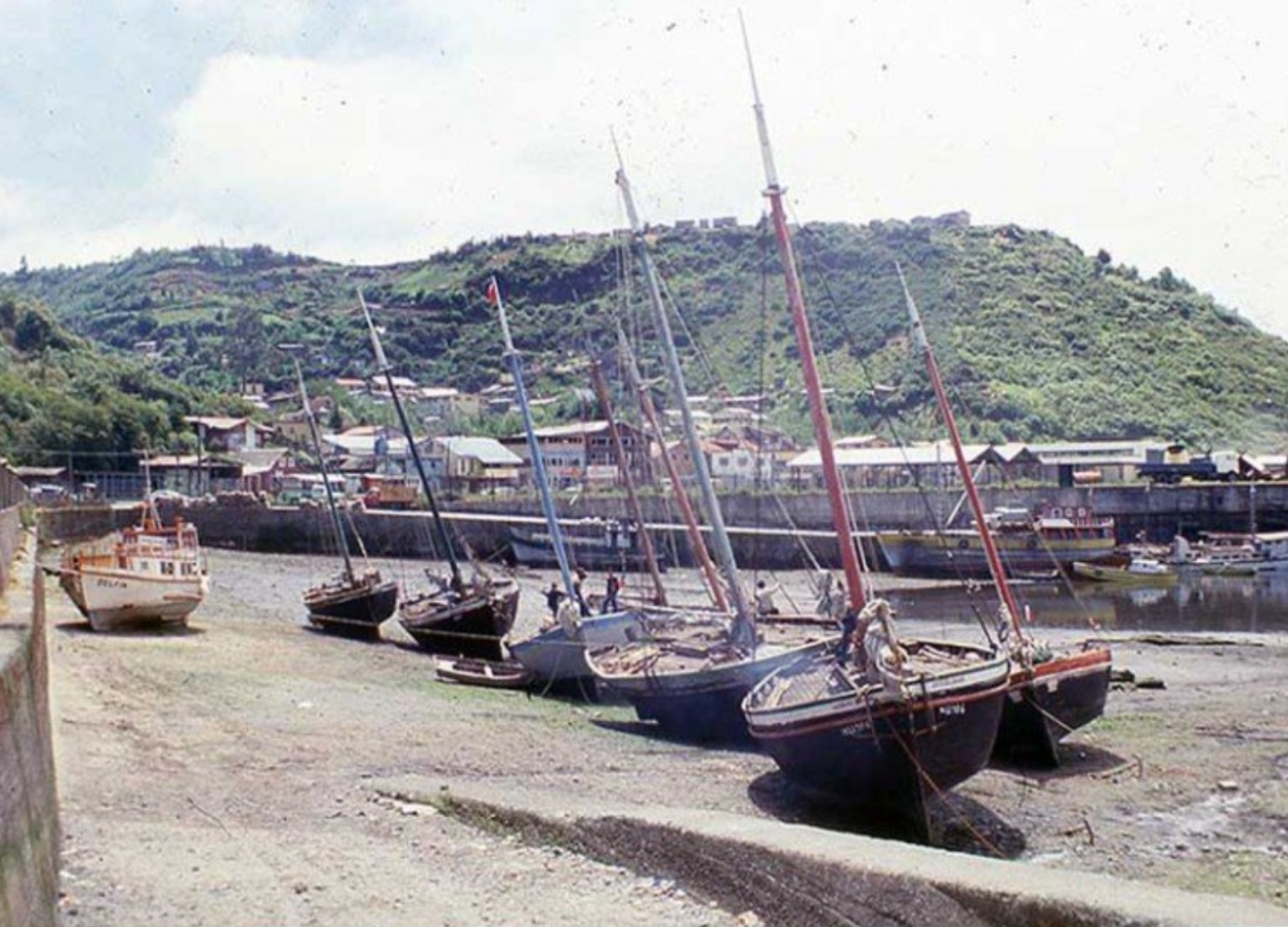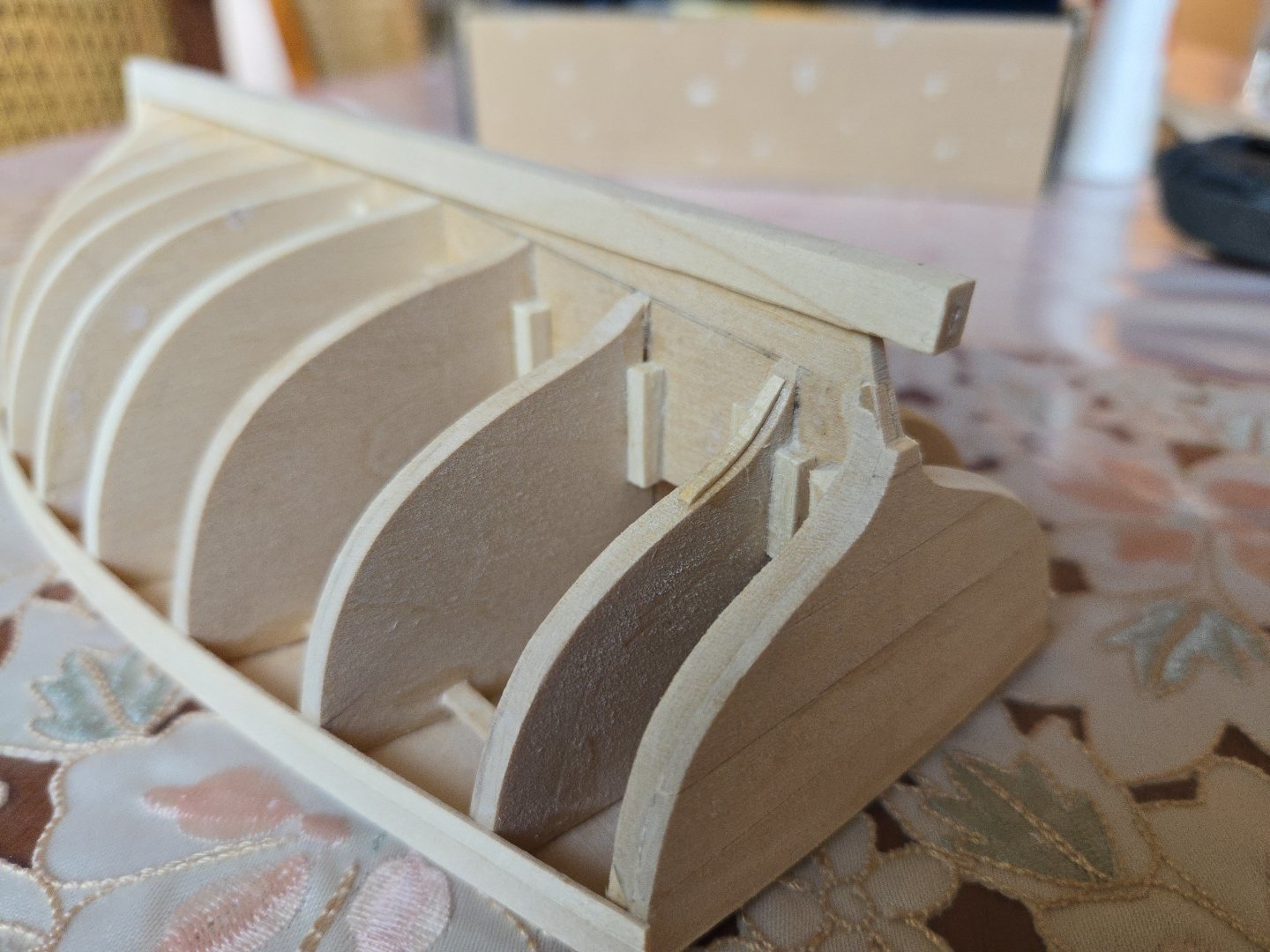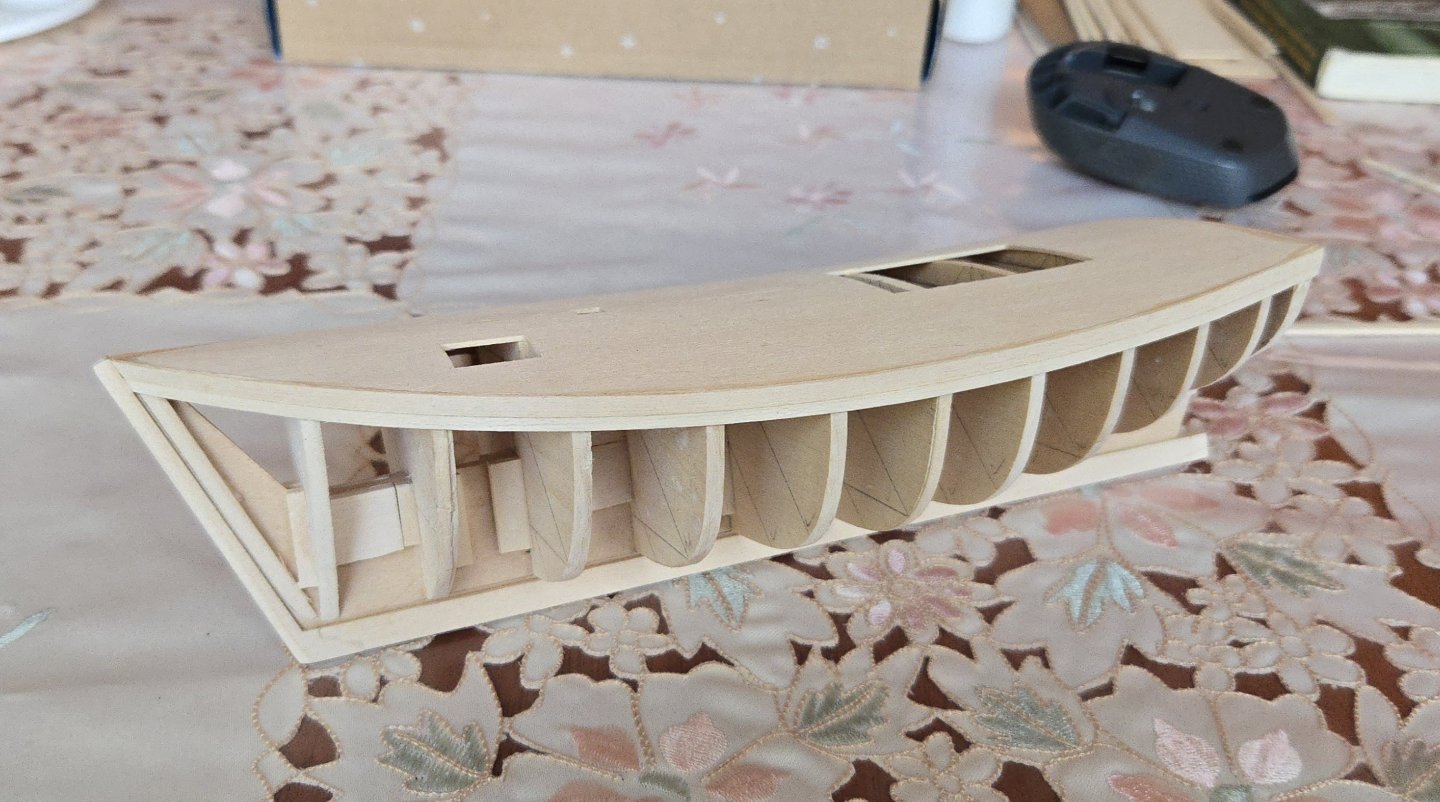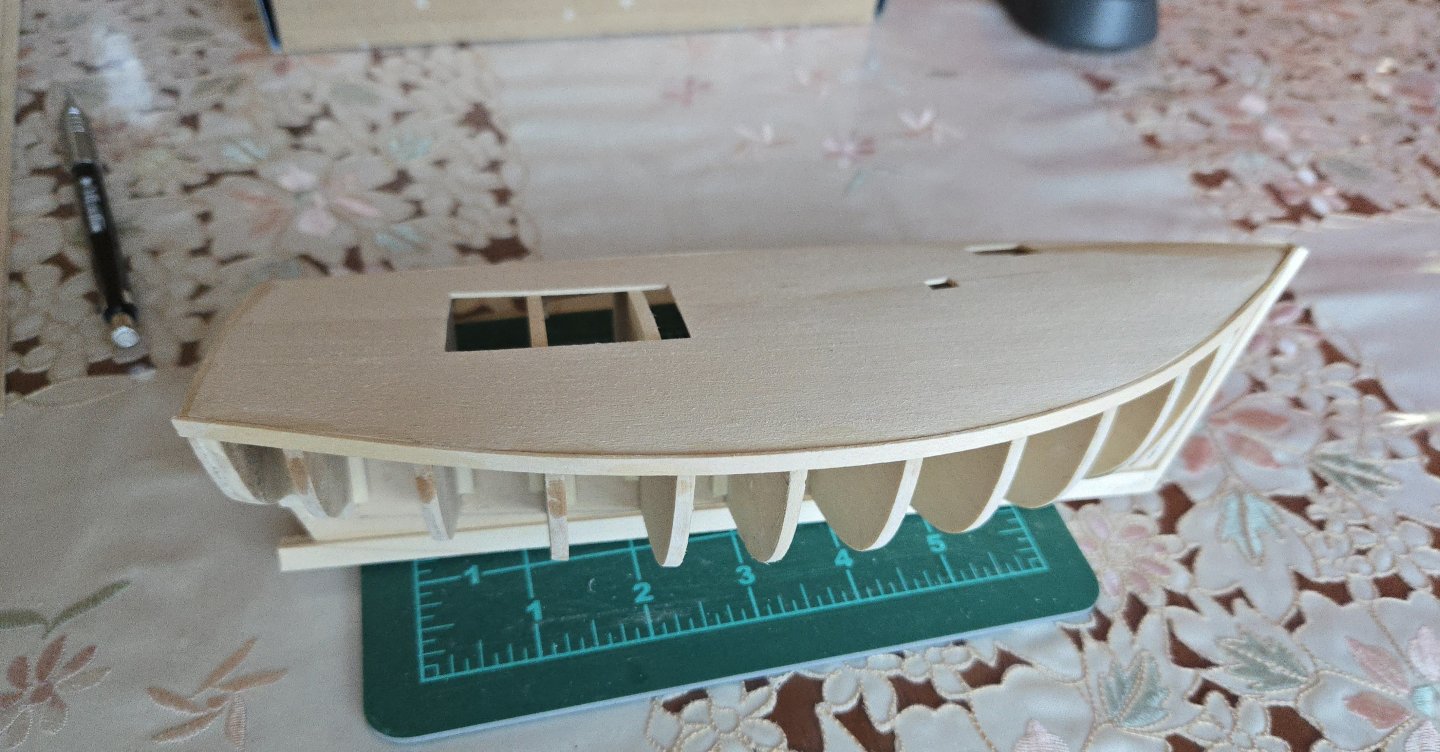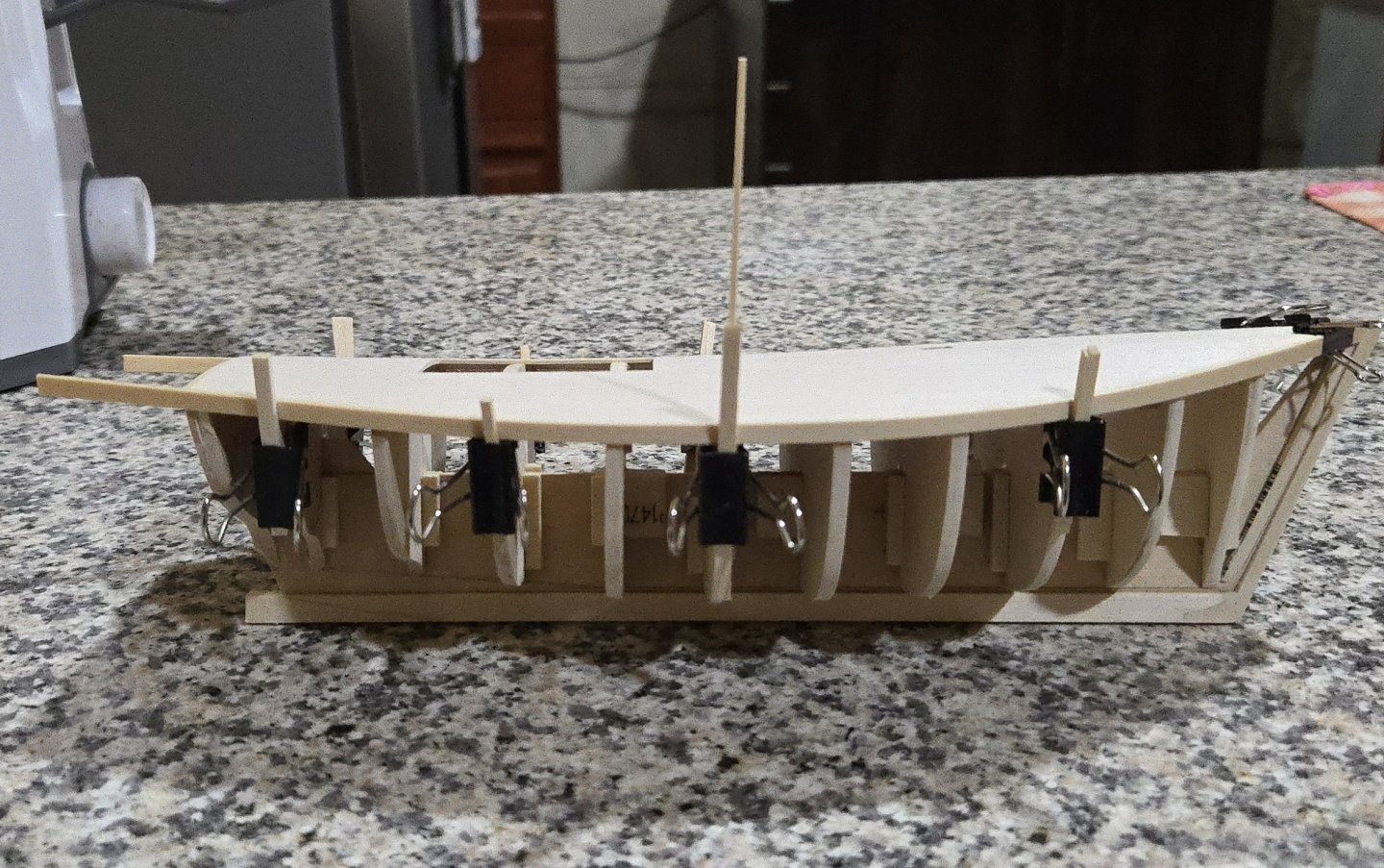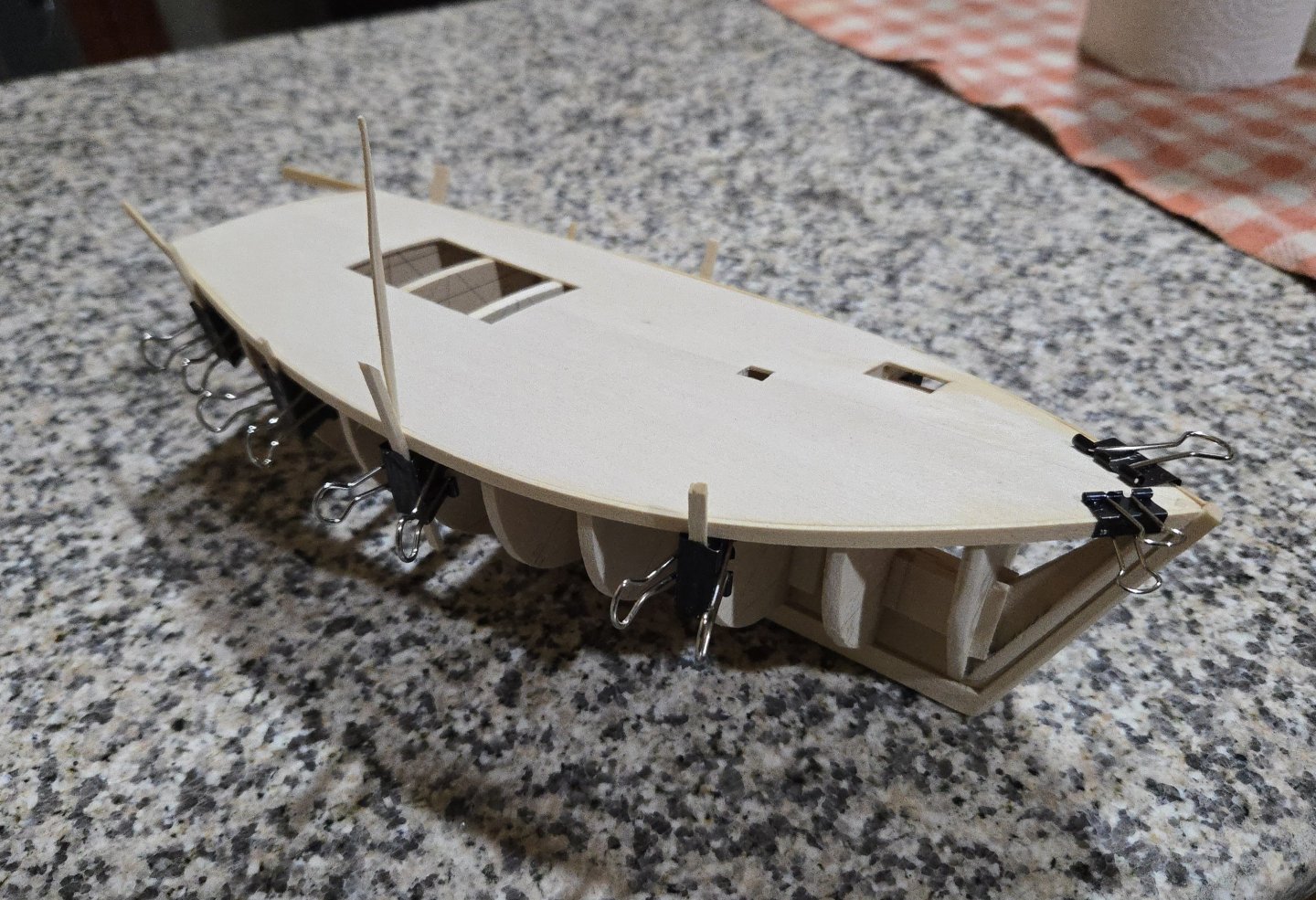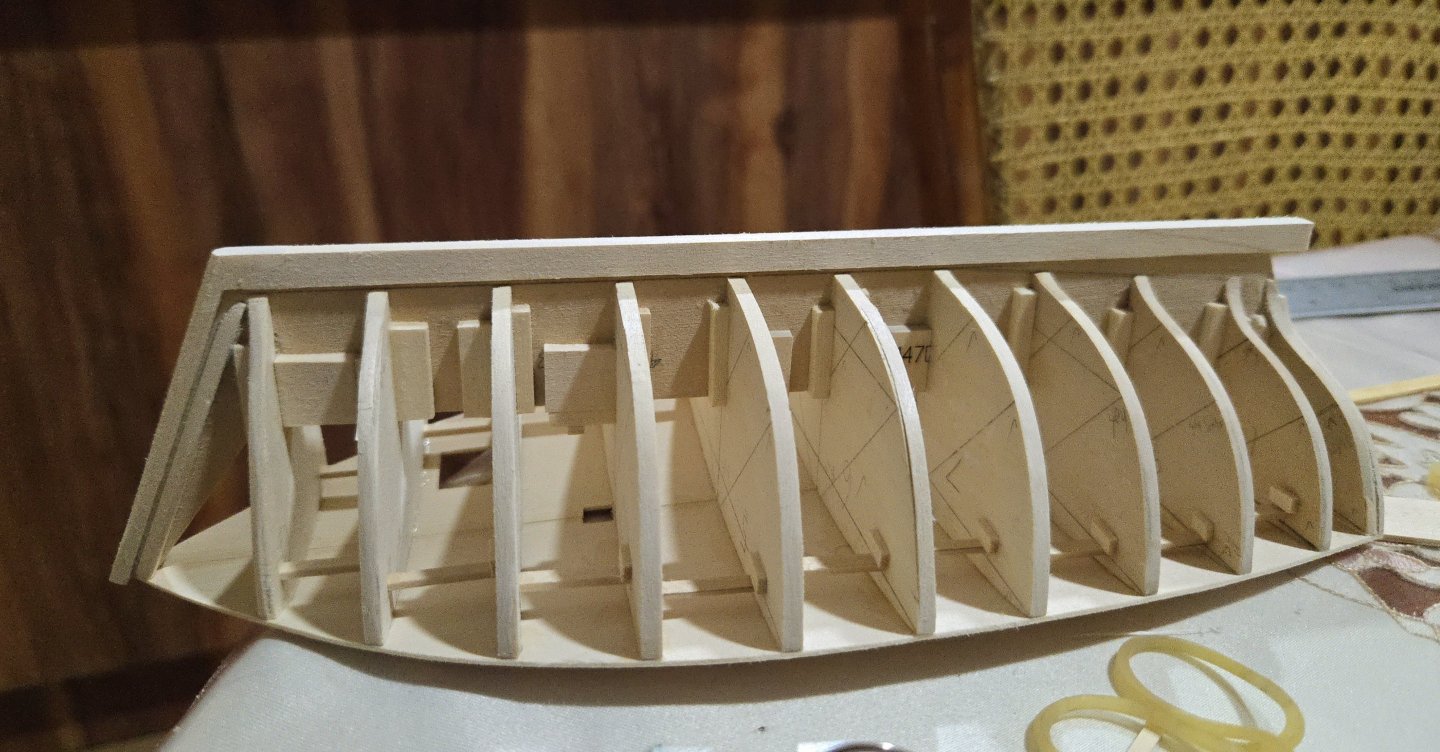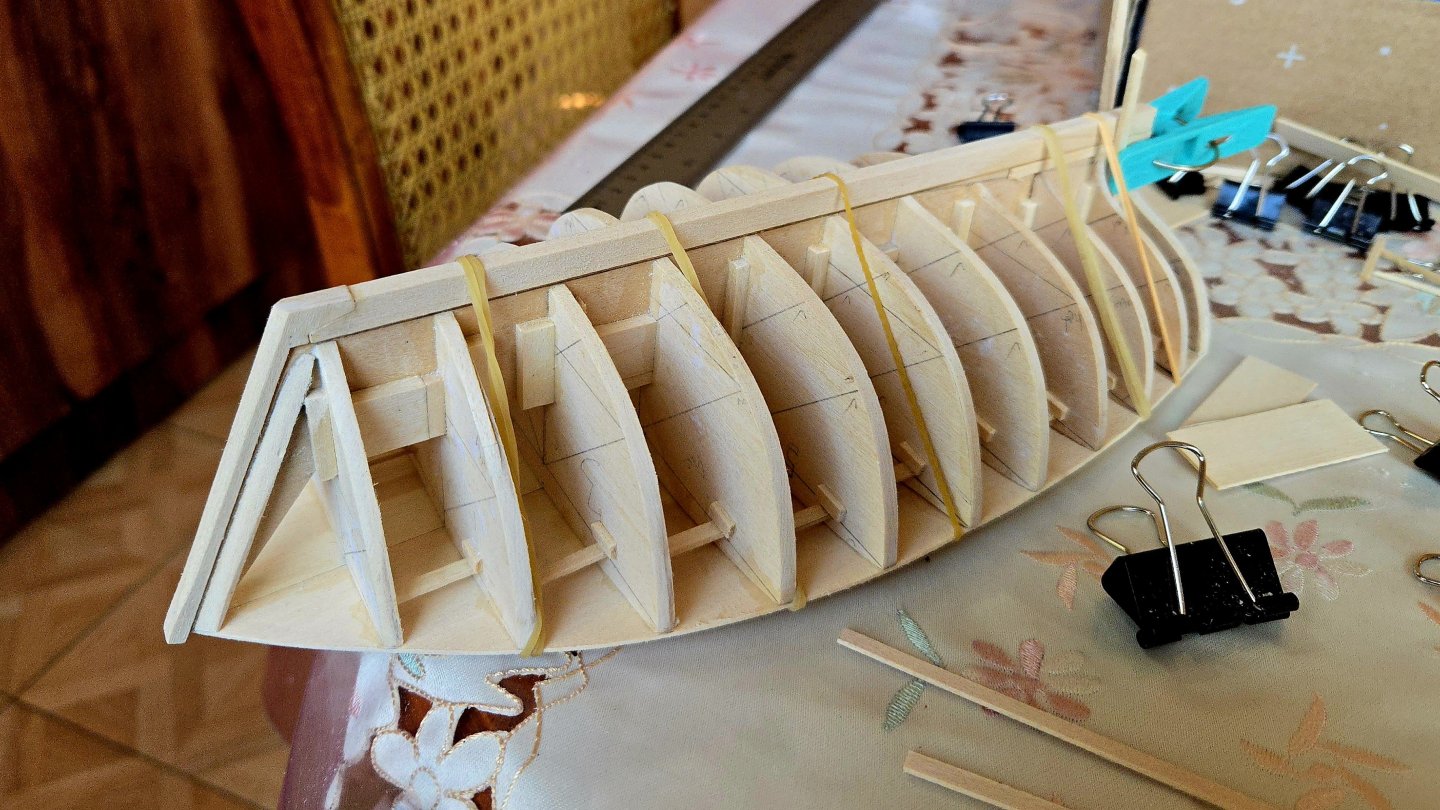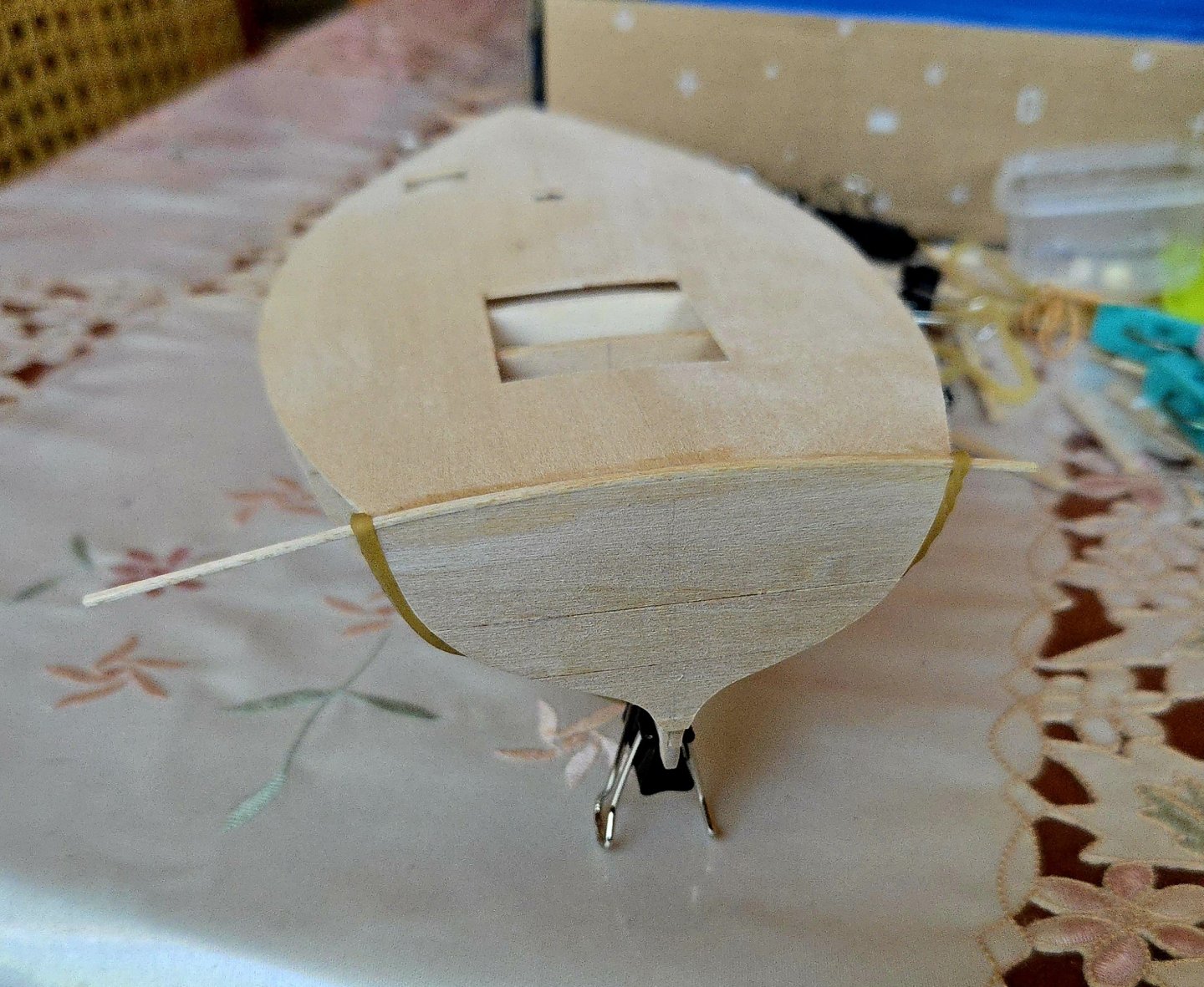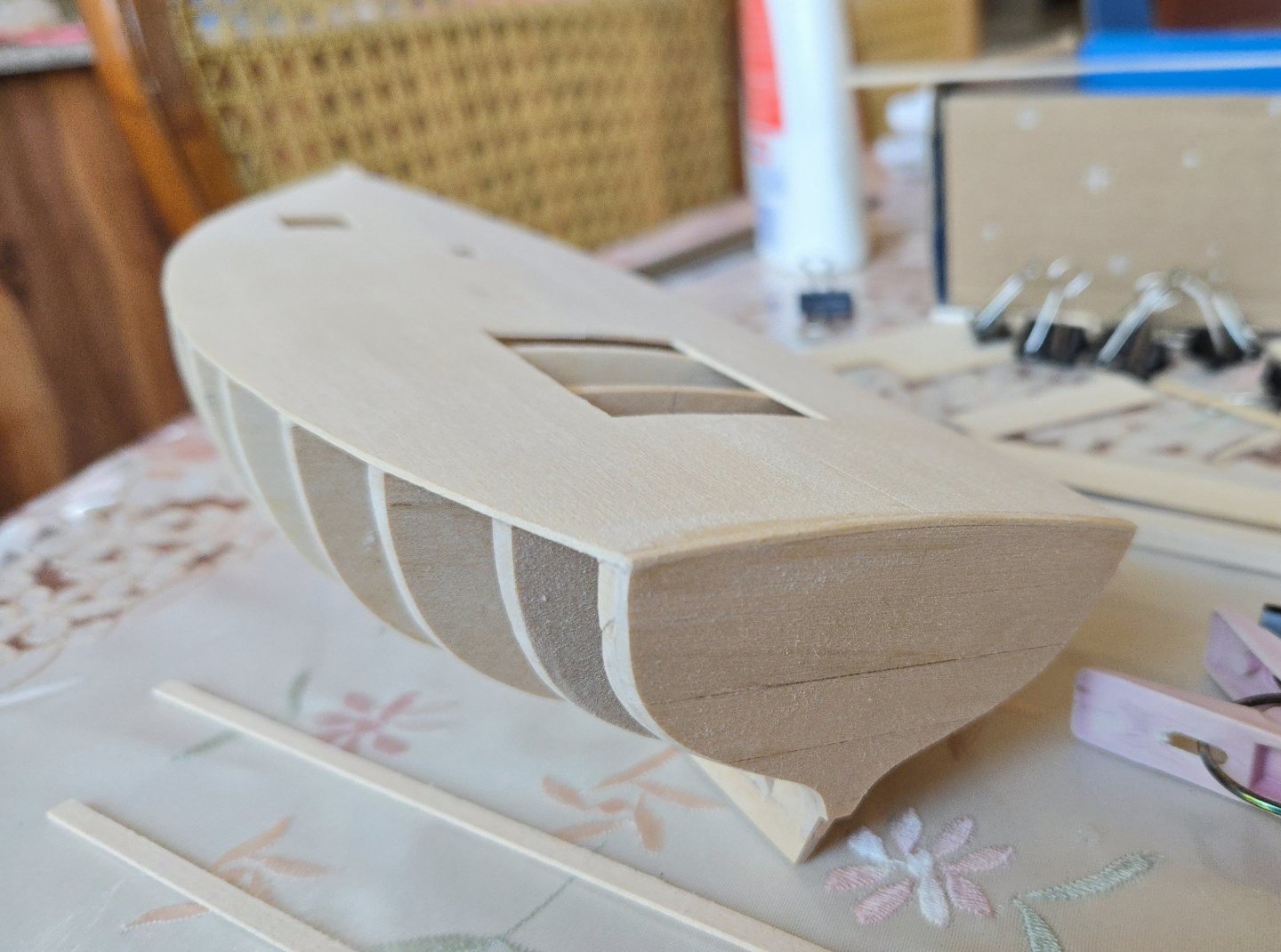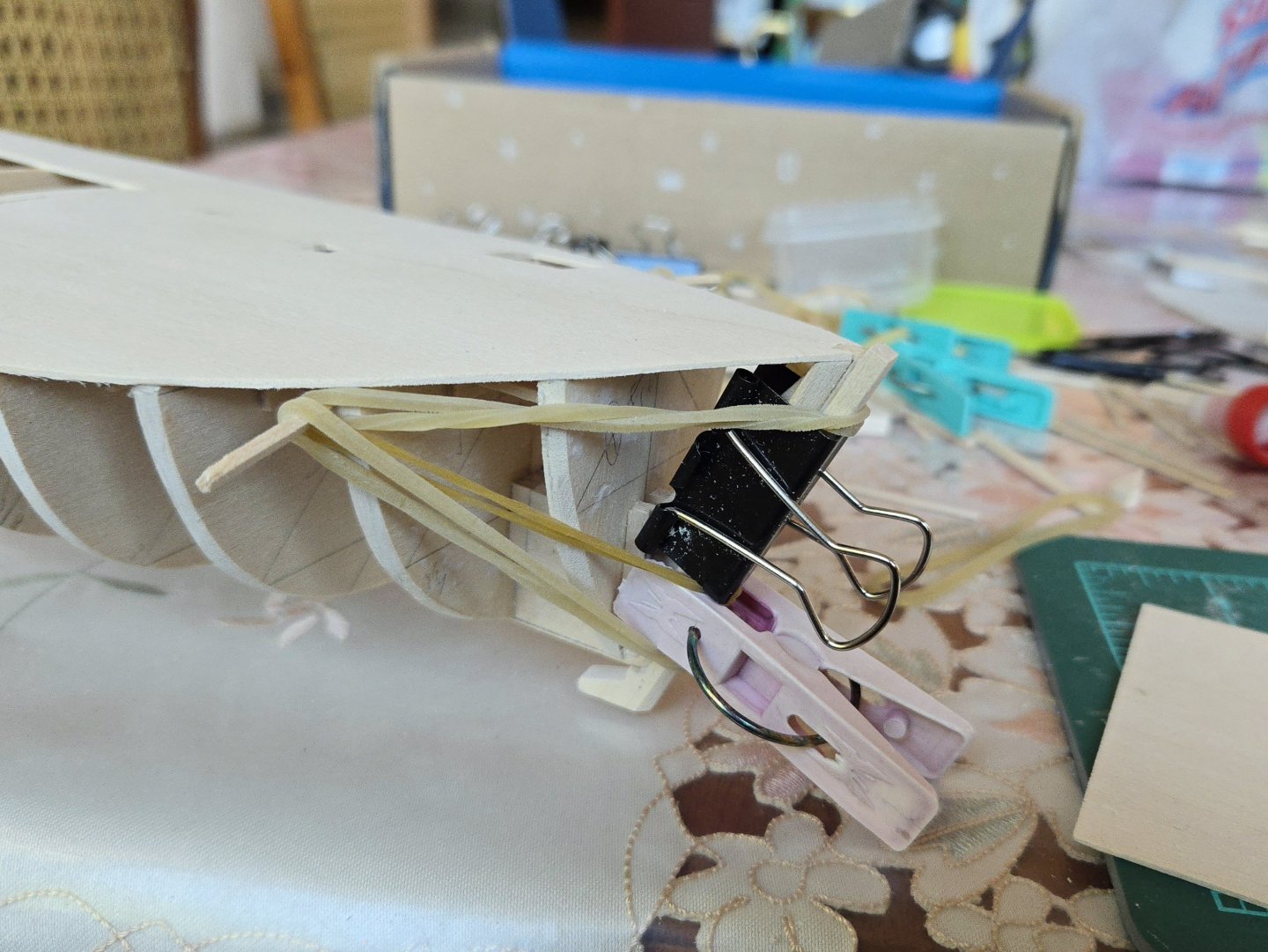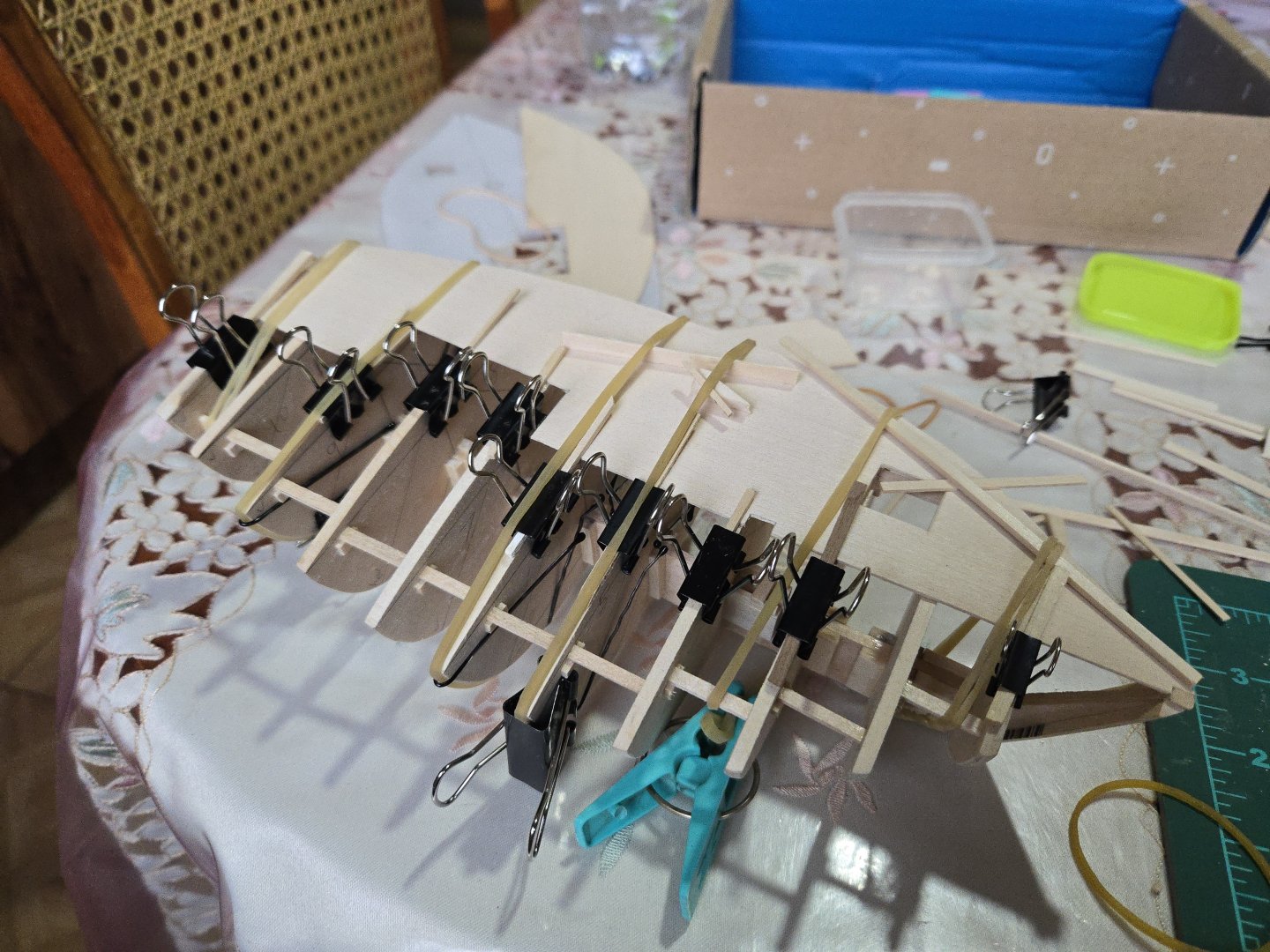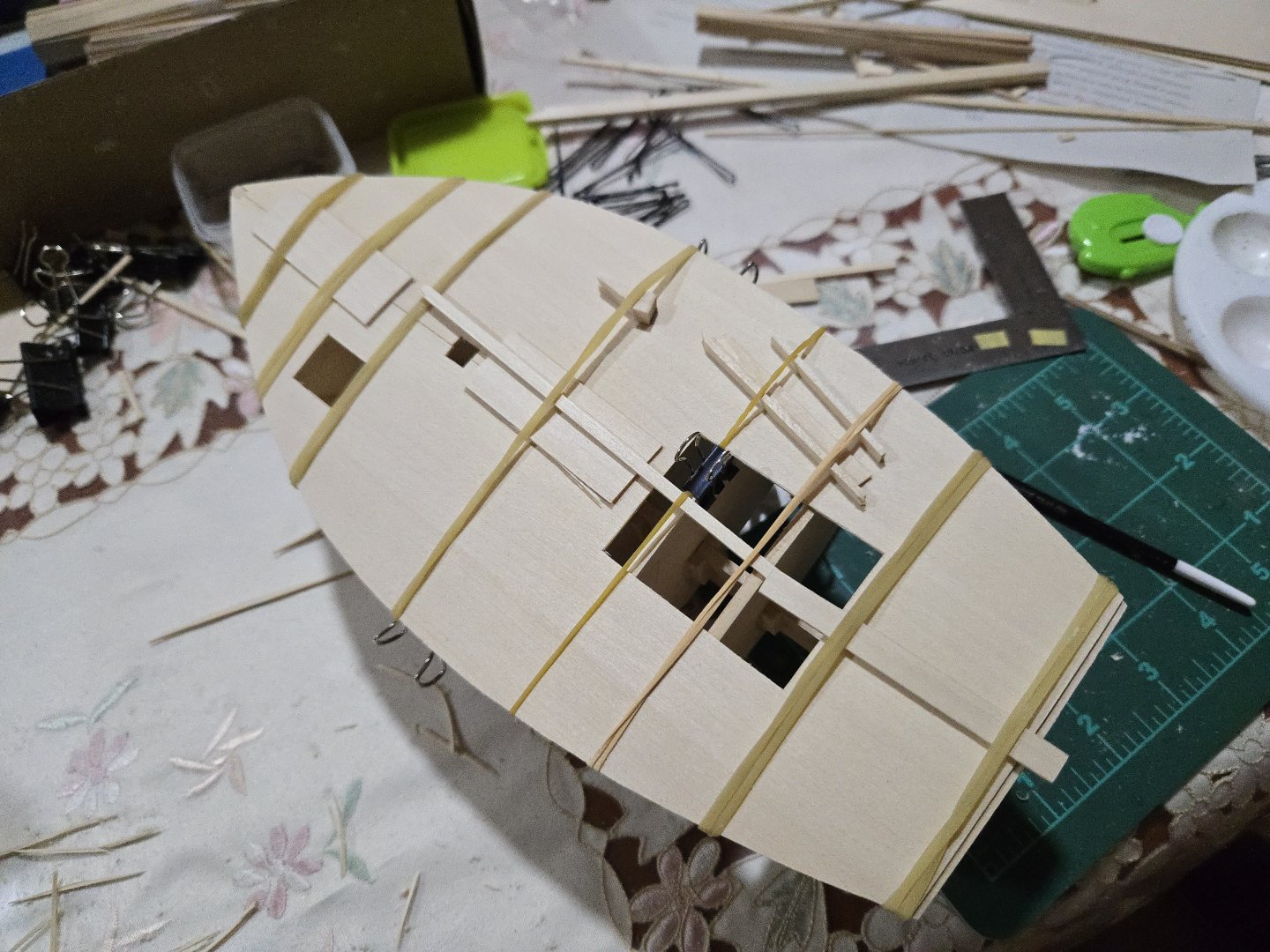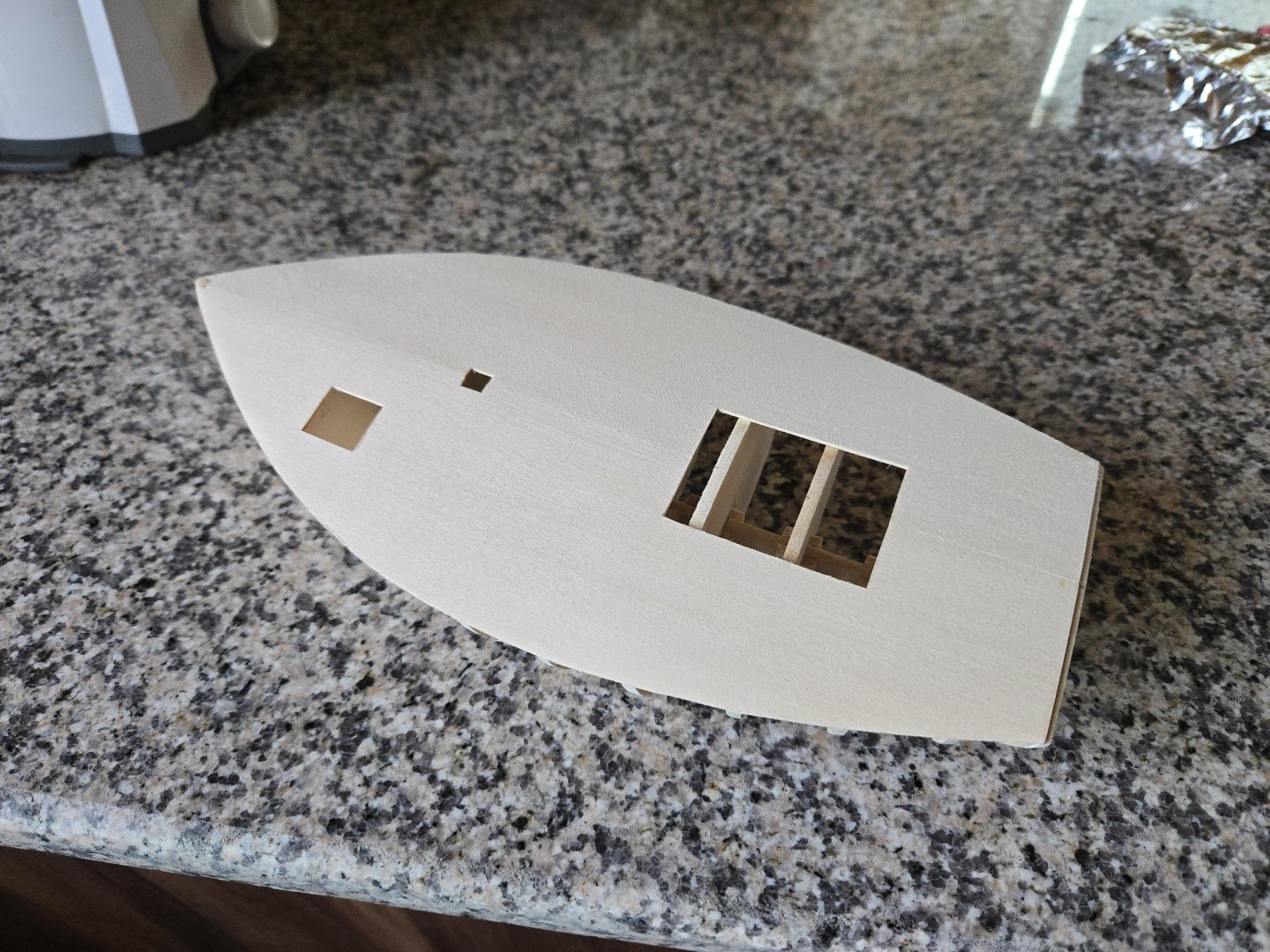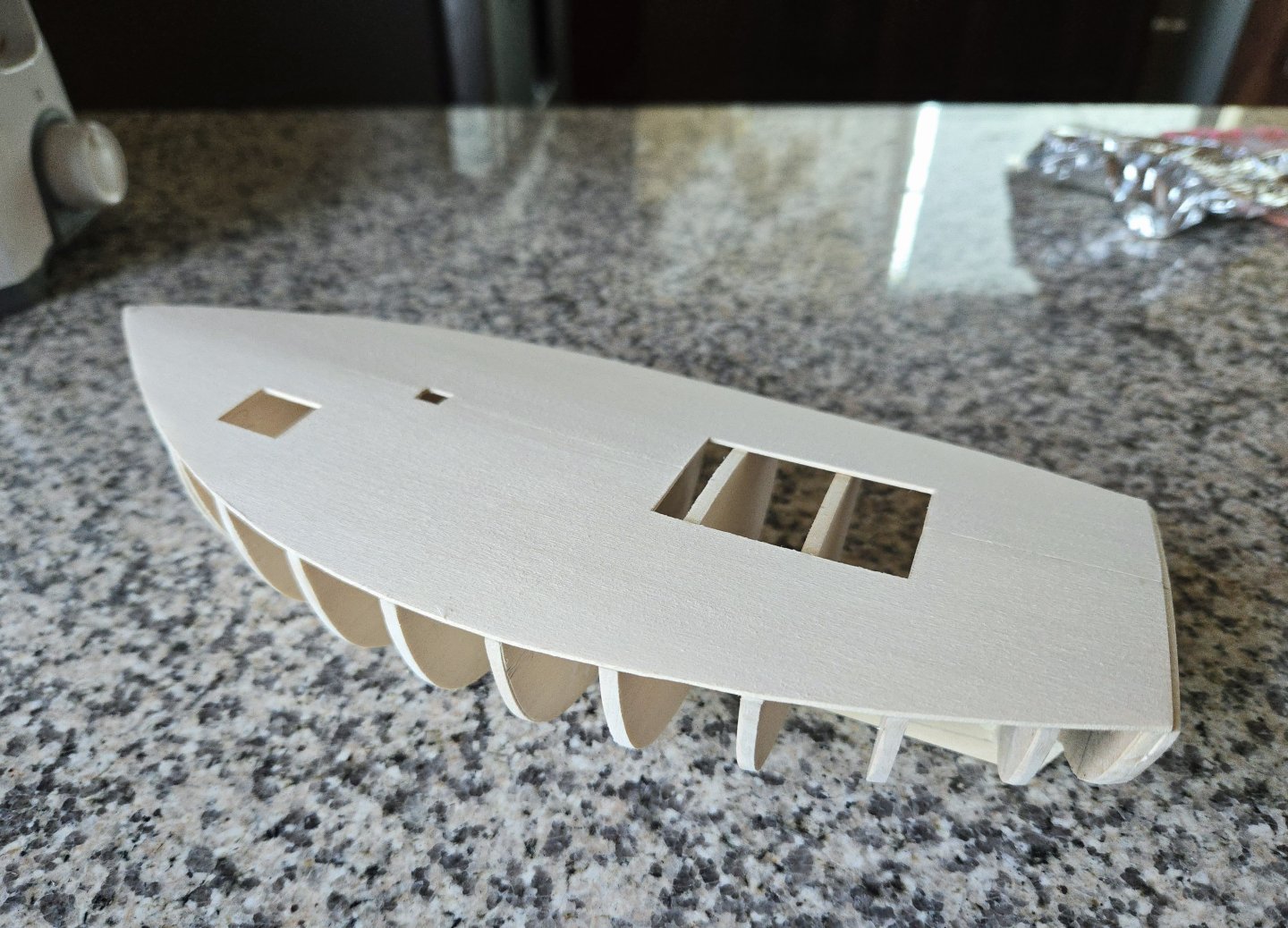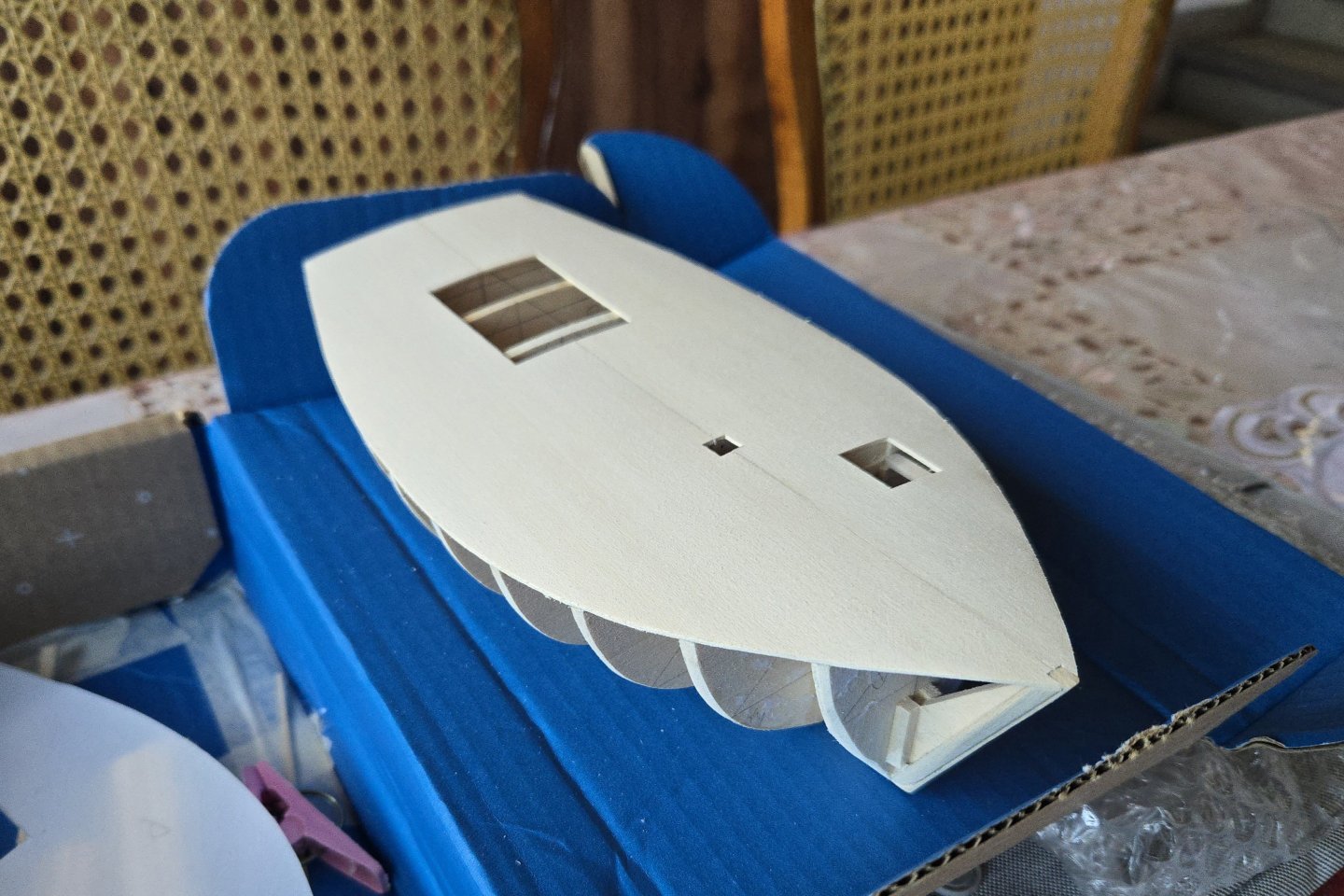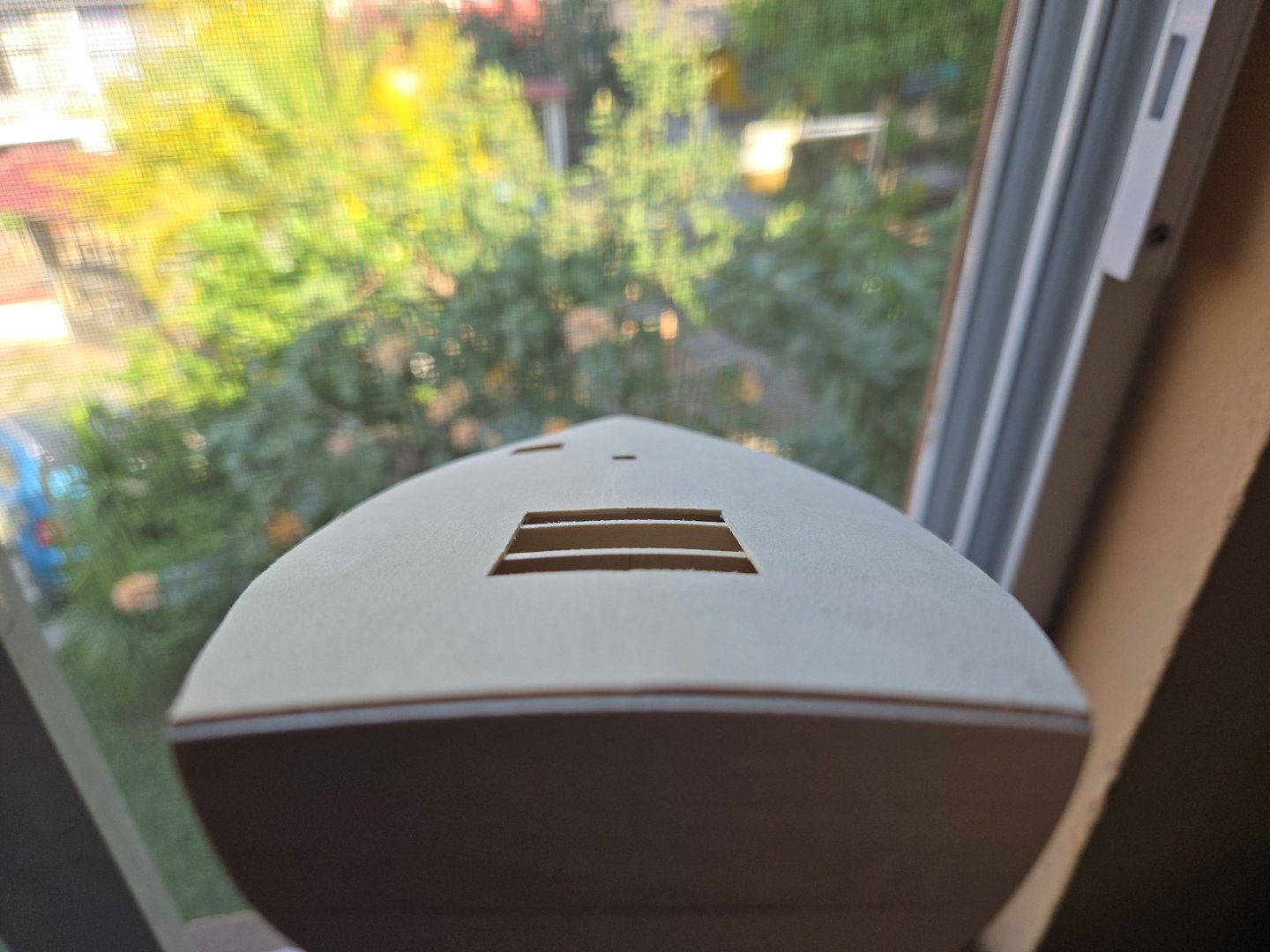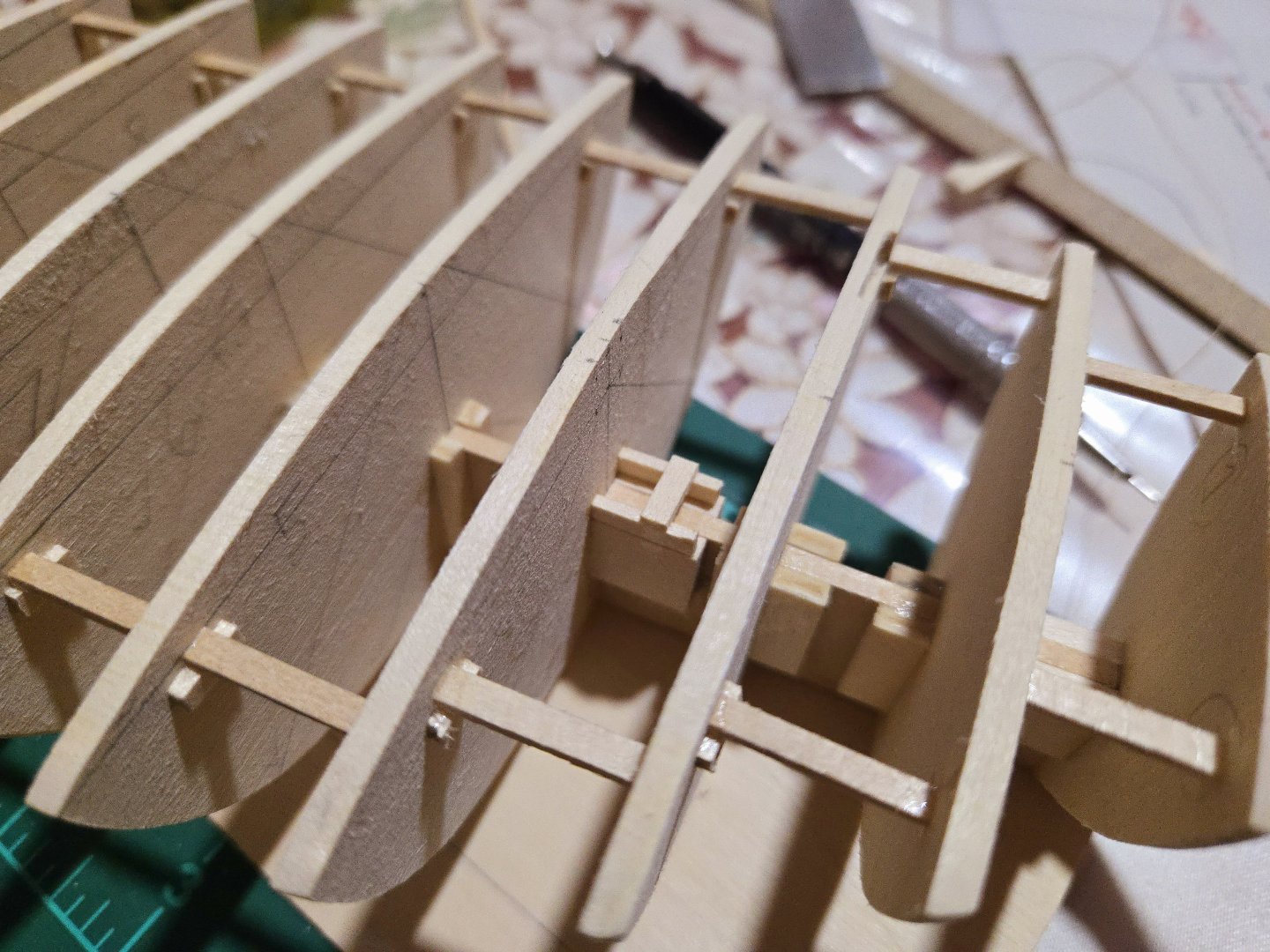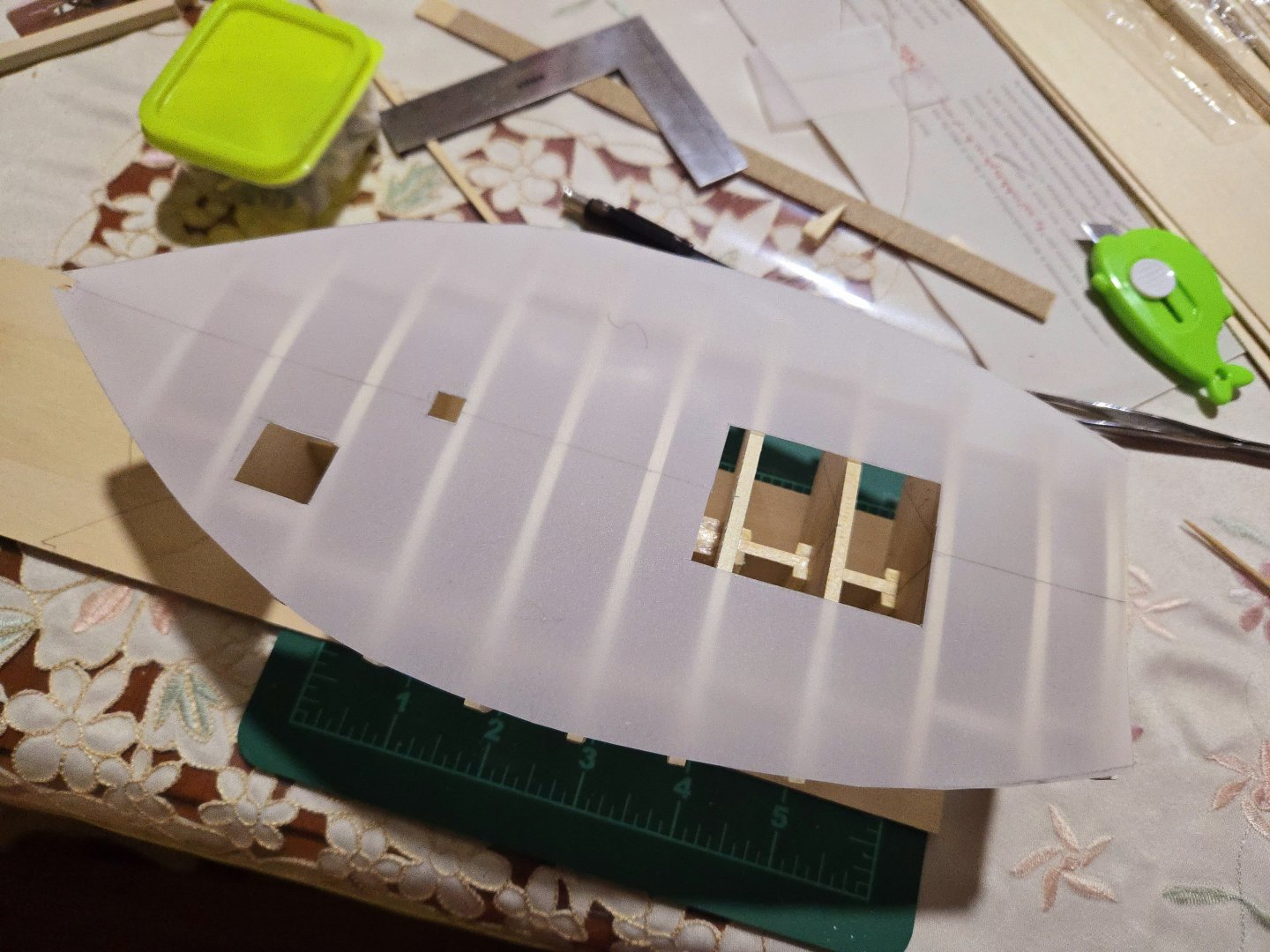-
Posts
1,316 -
Joined
-
Last visited
Content Type
Profiles
Forums
Gallery
Events
Everything posted by JacquesCousteau
-
Very nicely done! The naval board style looks like a great way to display a model without taking up a ton of space, plus it really lets the hull construction and details shine.
- 43 replies
-
- Vanguard Models
- Sherbourne
-
(and 1 more)
Tagged with:
-
It's coming along very nicely!
- 39 replies
-
- Norwegian Sailing Pram
- Model Shipways
-
(and 1 more)
Tagged with:
-
Thanks, very good eye! I actually hadn't caught that. Somehow I misinterpreted the slight horizontal line through the stealer as the continuing plank, not sure how I missed that it's actually a stealer. It's definitely an interesting stealer, given that it seems to suddenly double the width of the plank. It looks like the plank above also turns into a steaker, this one with a pointed diagonal joint with the plank running into it.
- 312 replies
-
- Chile
- Latin America
-
(and 6 more)
Tagged with:
-
Thank you for your detailed comments on this. I'm definitely wary of having too much randomness and making it look weird/wrong rather than interesting/accurate. The idea to test it out with card first is a good one. I also agree that a more variable width between planks rather than between bands may end up looking more natural, but it will be tricky to balance this so it doesn't look off. It's also worth noting that some lanchas had relatively even planking, as on the Marisol, below. Any unevenness there is pretty subtle--and somewhat obscured by the paint, as will be the case on my build: Source: https://www.carlosvairo.com/galeria-puerto-montt-lanchas-chilotas So, for now, I've decided to start the lower band of planking with equal-width planks marked out. After I get a couple strakes down, I may revisit whether I want to switch to some variable-width planks instead. After getting the bands finally adjusted, I marked out the plank widths (which may be adjusted a bit later, as mentioned above). I also worked out a 4-plank butt shift pattern. Based on photos like that of the Marisol, above, it seems like having 2-3 planks per strake should be reasonable. I then began work on the first plank, using the same method I used on the NRG Half-Hull--that is, using tape to mark out the shape (the method is described in more detail in that build log). So far I'm finding that the planks are close enough in shape that, after shaping one, I can trace around it to make the plank for the other side, leaving it very slightly wide and carefully sanding for the final shaping. I've added the fore and aft planks of the first strake above the garboard. Despite the pronounced twist, they seem to have turned out all right. There's a slight gap at the aftmost end on the port side, which I couldn't see before due to the clamps, but it's small and a bit of filler can fix it.
- 312 replies
-
- Chile
- Latin America
-
(and 6 more)
Tagged with:
-
Thanks, all! With the garboard squared away, I’ve been working out the planking belts. I actually started on this a bit earlier as a way of figuring out what width I should give the garboard. I don’t really have any information about what sizes of wood were available, but what I could do, in at least a few of the photos that I have, is to count the number of planks on the hull, and from there work out how many planks I wanted to have on this model and what their maximum width would be, from which I was able to choose a slightly wider dimension for the garboard. Interestingly, many lanchas have planking of highly variable width where it intersects the stem. This is maybe clearest in this photo from 1935, which seems to have 14 planks below the sheer strake, some of them much wider than others. Source: https://www.bibliotecanacionaldigital.gob.cl/bnd/629/w3-article-320806.html Similarly, the vessel below (which seems to have 12 planks below the sheer strake) from 1963 also has planks of different widths. Source: https://www.memoriasdelsigloxx.cl/601/w3-article-1805.html I was unsure of how to best handle the uneven plank widths. I would like to make an accurate model, but this seems like something that could be easily overdone and look strange. It also would pose a challenge to lining out the hull. After some consideration, what I’m currently planning is to divide the hull into three equal bands of planking. However, while the upper and lower band will be made of 4 strakes each, the middle band will have 5 strakes. This way, the narrowest planking is around the turn of the bilge, which seems to be more or less what’s going on in the second photo above and which would make the most sense to me if there was any deliberate planning about where to use narrower planks (instead of the builders simply making do with what was available, which likely was at least a part of it). So, the middle band’s strakes will be about 20% narrower than the other strakes, which seems notable to anyone paying attention to the hull without going so far as to make the hull look weird. I’ve therefore begun marking out the bands using chart tape. As on the half-hull build, after getting a good run I’ll be letting it sit overnight to approach it with fresh eyes tomorrow. If anyone has any suggestions about the variable planking width and my plans to deal with it, I’m all ears!
- 312 replies
-
- Chile
- Latin America
-
(and 6 more)
Tagged with:
-
Thanks! Thanks for the suggestion! After coming back to the model this morning I had the same thought about something being a little off in that area. From photos it seems like there were usually multiple planks ending against the sternpost, so I didn't want to widen the plank at the aftmost end, but I thought I might be able to narrow the plank in some parts and get rid of the odd flatness to the run of the garboard aft. I considered trying to remove the plank with alcohol but was concerned that it would be difficult as this plank is the most solidly glued of all the hull planks (substantial surface area glued to the deadwood, sturdily set into the rabbet). Before taking it off, I decided to try reshaping the plank on the model--worst case scenario, I'd just have to redo it anyway. It was tricky as I don't have all my tools while traveling, and the files would have been really useful, but with a sanding stick and a craft knife I was able to give the plank a bit of a better run. Before: After:
- 312 replies
-
- Chile
- Latin America
-
(and 6 more)
Tagged with:
-
The garboard is now complete! After the fore plank, I turned to the aft plank, following the same procedure to make it. Interestingly, this time it did turn out to need a bit of a downward curve to it. After soaking it, clamping it in place, and allowing it to dry, I decided that it was a little wide between the 7th and 10th bulkheads, so I sanded it down slightly there so it would better form a nice curve. Finally I was able to glue it into place. It looks good from above (well, below relative to the boat itself), but perhaps a little odd from the side. This is because, based on photos, the garboard needs to end halfway up the sternpost. I could have more aggressively narrowed the plank around the 9th bulkhead, but I think this would have resulted in an odd shape when viewed from other angles. In any case, the hull will be painted. Next up: working out the planking bands.
- 312 replies
-
- Chile
- Latin America
-
(and 6 more)
Tagged with:
-
Definitely! I found that I quite enjoyed planking during the Half-Hull kit, so I'll have to see how I feel as this build goes on. Somehow the tape must have gotten a little twisted, and the bottom of my fore garboard plank had a bit of a curve to it. Testing it showed that the curve shouldn't have been there, but thankfully I had cut the plank a bit oversized so I was able to reshape it properly. I had forgotten how much dust plank forming creates! Rather than try to set up the chart tape the same on the other side of the hull, I decided to just copy the garboard plank from this side onto the other. Measuring along a few bulkheads showed pretty much the same dimensions, and any issues will be taken care of when laying out the planking belts. Given that the tape form had turned out inaccurate, I instead just traced the existing plank and then carefully shaped and sanded it to size. I then soaked the planks in hot water for a few minutes and set them to dry in place on the hull. I clamped them both at the bow first, then aft, then pressed with scrap wood and fingernails to make sure they were sitting evenly in the keel rabbet before clamping there too. Despite the extreme twist, the planks seem to be in good contact with each bulkhead. When the time comes, we'll see if the same holds true for the stern--I suspect the deadwood will complicate things a bit.
- 312 replies
-
- Chile
- Latin America
-
(and 6 more)
Tagged with:
-
Thanks, Paul! I was able to fair the shims on bulkhead 10 and to add the sternpost. I also realized, based on photo evidence, that the bottom of the stem should be rounded rather than sharp (as shown in the plans). This was easily done by sanding. I also started on the garboard strake, using chart tape to lay out its shape after determining that I would go with a maximum width of 1/4 inch. Determining its shape is quite challenging due to the 90-degree twist, especially aft where the deadwood complicates matters more. I ended up adjusting the aft end further from the photo above. The fore end also was a bit tricky--I didn't want to make it rise too high, but the low fore end shown below turned out to be less than half the width of the widest point, so I had to slightly raise it. The overall line seems all right now. I've begun work on the fore starboard plank following the method used for the Half-Hull build. The aft half will undoubtedly be trickier. Happy New Year's Eve!
- 312 replies
-
- Chile
- Latin America
-
(and 6 more)
Tagged with:
-
Welcome! Looking forward to following your build log!
-
The sheer strake turned out pretty well. There are a few points where it’s not totally flush with the subdeck, but where it’s off, it’s off by a very small amount, protruding above the subdeck by at most about 1/64th of an inch. Once I am back in Mexico City and have access to my tube of wood filler, I think a light application of filling at these points and some sanding should leave a nice, smooth edge for the covering boards and decking. On the hull planking: looking at photos, there’s a very wide range of wale (or rubbing strake) positions. Some lanchas, including the Quenita (which my plan sheet is based on), have no visible wales—that is, all the planking appears to be of the same thickness. Others have a wale directly below the scuppers. In at least some of these cases, it may not actually be a wale, but a protruding covering board. Some others seem to have had a thin wale just below the scuppers (which may just be an extended covering board) and/or a thin wale somewhat lower on the hull. It’s also worth noting that some of these thinner pieces may have simply been rubbing strakes rather than real wales. The photo below shows several possibilities. The lancha at right foreground has a thin wale or rubbing strake just below the scuppers. It seems to wrap around the chainplate for the shroud, so this was likely a separate part from the covering board. The lancha at left, in contrast, seems to have no wales, although the covering board is apparently visible and seems to be a different color (at least near the stern). Interestingly, the covering board seems to protrude slightly near the stern, but by the midpoint of the hull is level with hull planking (which is why I interpret it as an oversized covering board and not a rubbing strake, which would be visible around the midpoint of the hull). The two lanchas at center-right background, in contrast (one at anchor and one under sail) seem to have a thin wale/rubbing strake or extended covering board below the scuppers and a thin wale/rubbing strake lower on the hull. Source: https://www.bibliotecanacionaldigital.gob.cl/bnd/629/w3-article-613545.html Still others had what looks to be a sort of rubbing strake just below the scuppers, but a rather thicker piece (either a wale or a thick rubbing strake) lower down, as on this vessel (in the foreground): Source: https://www.bibliotecanacionaldigital.gob.cl/bnd/629/w3-article-320752.html Some vessels like the one below had a rather thick wale or covering board just below the scuppers, and a thinner sort of rubbing strake lower down. (This lancha is particularly interesting in that it also has some sort of ratlines or a ladder in the shrouds despite being, as seen by the person in the background, a pretty small vessel—ratlines were usually only seen on the larger coasting schooners or some of the large, round-sterned sloops). Source: https://www.memoriasdelsigloxx.cl/601/w3-article-86081.html Finally, others had flush covering boards, and a thin wale or rubbing strake lower down, as on the foremost vessel in the photo below: Source: https://www.carlosvairo.com/galeria-puerto-montt-lanchas-chilotas All of which is to say, I have several options for placing the wale. I personally don’t much like the look of the totally smooth hull, so I decided to follow the example of the last photo above—that is, there will be a rubbing strake or thin wale a bit below the scuppers. I decided to add it in two parts like on my NRG Half Hull build, doubling 1/32x1/8-inch strips that I have left over from my Maine Peapod build. This way I’ll be able to sand the hull smooth first and paint the rubbing strake/wale off the model to get a clean paint job. The first layer of the wale is now on. All planks below this will be spiled/cut to shape. Finally, having faired the hull, I was having a consistent problem with a bit of a hollow at the 10th bulkhead near the center. After checking various images, I decided that the hollow was inaccurate, and so I’ve now added shims in that spot, as seen below. Once I re-fair that spot of the 10th bulkhead, I’ll be able to add the sternpost and then the garboard. I’ll then be able to mark off the hull for planking.
- 312 replies
-
- Chile
- Latin America
-
(and 6 more)
Tagged with:
-
There's some useful information and leads to follow in the conversation here: It touches on some useful source books for modeling British warships of the era. You may also want to check if the original plans for the Triton or other vessels of its class are available online (wikimedia has a ton of British warship plans), they would probably give you a good idea of the mast locations and angles. Nice job on the windows!
-
Thanks, John! Next, I added the extra strip across the top of the transom, holding it in place with a rubber band (a relatively light one, as the strip was pretty fragile). I then trimmed and sanded it smooth. The joint with the transom will still need a bit of filler and sanding. Next, I added the stem, so as to start creating the bow rabbet and to be ready for planking. Again, I used rubber bands to hold it in place. Once that had dried for a couple hours or so, I added the keel. Adding it made me realize that the stem was slightly angled off-center, but I was able to sand it into the proper shape afterward. I then sanded the keel and especially the joint between the keel and the stem. For now I'm leaving off the sternpost, and I'll trim the aft end of the keel once I add it, but I'm liking how it's coming out so far. Finally, I cut out two 1/4x1/32-inch strips to use as sheer strakes. I decided that these would be made of a single piece. I suspect that the strakes lower down will be easier to make from multiple planks due to the serious curves and twists. For now, the sheer strakes have been soaked and are drying in place. Fitting them made me realize that, despite my best efforts, the bow rabbet is a little small to really fit them, so I'll need to somewhat thin the planks where they reach the rabbet.
- 312 replies
-
- Chile
- Latin America
-
(and 6 more)
Tagged with:
-
Thanks! Adding the subdecks was slightly more complex than expected, but they're on now. First, I marked and trimmed the exterior edges. I had cut them a good bit oversized and realized that I was setting myself up for a lot of sanding, so I trimmed them to just oversized. Then I glued on the first subdeck on the port side. As can be seen, it took a lot of clamps and rubber bands. I started gluing around the center and added clamps to hold it in place and get the right curve fore-and-aft, and then added glue extending out to the edges followed by rubber bands to set the camber. Gluing the second half was trickier because, with the first half in place, I couldn't really clamp it to the bulkheads. Instead, it was glued all at once and mostly held in place with rubber bands. It was trickier to hold this one in place, and there ended up being a few points where the subdeck wasn't quite in firm contact with the bulkheads, despite adding shims beneath the rubber bands. Thankfully the gap ended up being very small, enough that I was able to sand it out of the subdeck despite it being just 1/32-inch thick. Another challenge was that it was very easy to bend the subdeck with the rubber band, unless it was placed at the junction with the bulkheads. After letting it dry overnight, I was able to remove the bands and sand the edge and top. The subdeck provides a better sense of how the camber turned out, I don't think it looks excessive. As can be seen, I cut the subdeck slightly short so I could add a strip at the top of the transom. I think having the grain running side-to-side there, instead of having open grain, will make it easier to use sanding and filler to disguise that I placed the top transom plank slightly too low. Next steps will be to add the transom top strip, add the keel/stem/sternpost, and to plank down to the wale. I can then line out the hull planking, add the covering boards, and begin planking the hull and the deck.
- 312 replies
-
- Chile
- Latin America
-
(and 6 more)
Tagged with:
-
Once again I'm traveling for the holidays, and once again I was able to bring along some supplies and tools to try and make a bit of progress. First, I added the mast step. The mast will have a square cross section extending a bit above the deck, so I just built a sort of box with 1/16x1/8-inch strip wood. I also checked the template for the subdeck. And then cut out the subdeck. It's wider than any of the 1/32‐inch thick sheets that I have, so I had to make it in two halves. It's roughly placed in the photo below, with the keel being used to roughly mark the mast position. I cut the subdeck wide, so I'll have a bit of trimming and sanding to do. I still need to glue it in place. Unfortunately, my attempt at dampening it and using rubber bands didn't work very well, as the thin wood just started almost rolling up. Once the subdeck halves fully dry (which is taking a while in the Veracruz humidity) I'll work out how best to glue them. Merry Christmas to those who celebrate, and Happy Holidays!
- 312 replies
-
- Chile
- Latin America
-
(and 6 more)
Tagged with:
-
Thank you for following! For now, I'll be working on the Lancha Chilota. I also have a few other projects in the pipeline and, as I enjoy having multiple projects going at once, I'm weighing which to start next.
- 286 replies
About us
Modelshipworld - Advancing Ship Modeling through Research
SSL Secured
Your security is important for us so this Website is SSL-Secured
NRG Mailing Address
Nautical Research Guild
237 South Lincoln Street
Westmont IL, 60559-1917
Model Ship World ® and the MSW logo are Registered Trademarks, and belong to the Nautical Research Guild (United States Patent and Trademark Office: No. 6,929,264 & No. 6,929,274, registered Dec. 20, 2022)
Helpful Links
About the NRG
If you enjoy building ship models that are historically accurate as well as beautiful, then The Nautical Research Guild (NRG) is just right for you.
The Guild is a non-profit educational organization whose mission is to “Advance Ship Modeling Through Research”. We provide support to our members in their efforts to raise the quality of their model ships.
The Nautical Research Guild has published our world-renowned quarterly magazine, The Nautical Research Journal, since 1955. The pages of the Journal are full of articles by accomplished ship modelers who show you how they create those exquisite details on their models, and by maritime historians who show you the correct details to build. The Journal is available in both print and digital editions. Go to the NRG web site (www.thenrg.org) to download a complimentary digital copy of the Journal. The NRG also publishes plan sets, books and compilations of back issues of the Journal and the former Ships in Scale and Model Ship Builder magazines.





